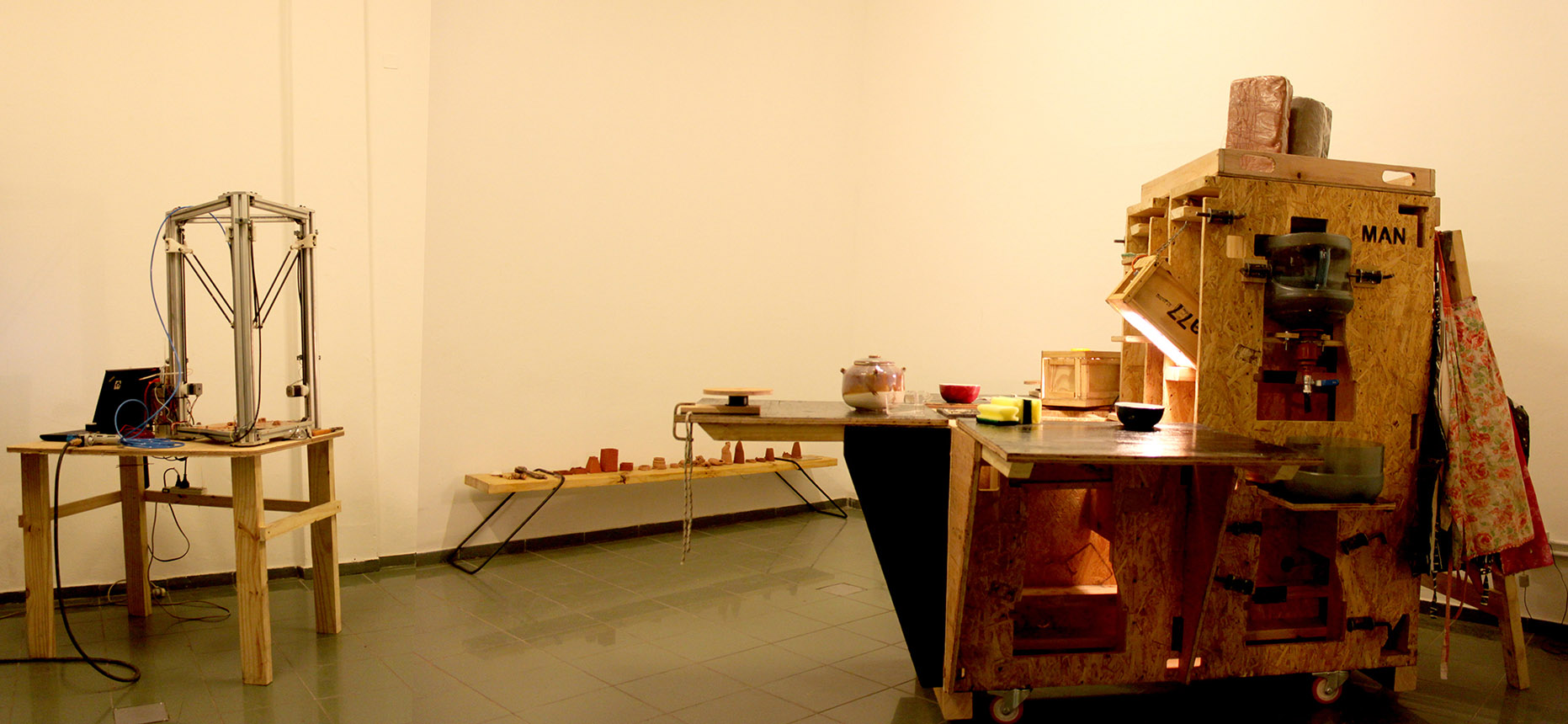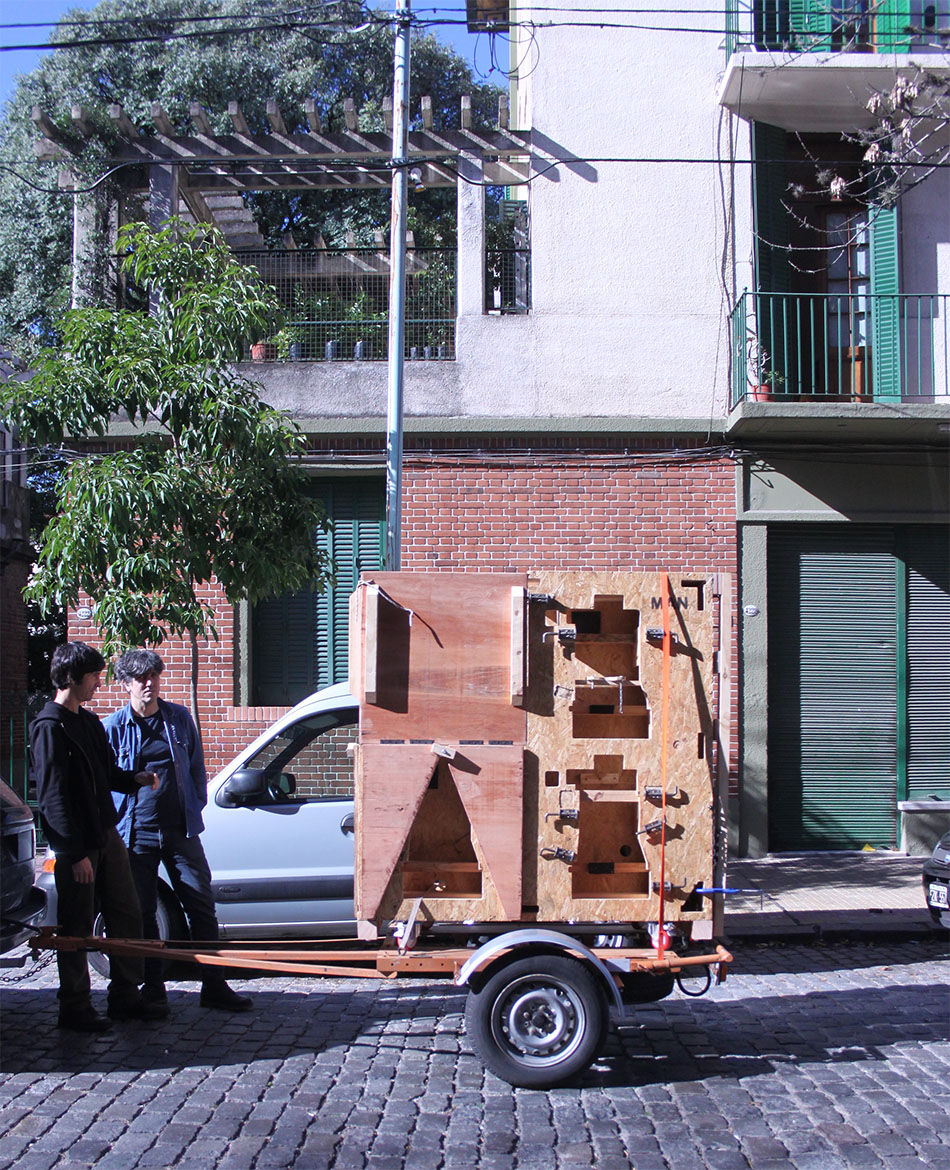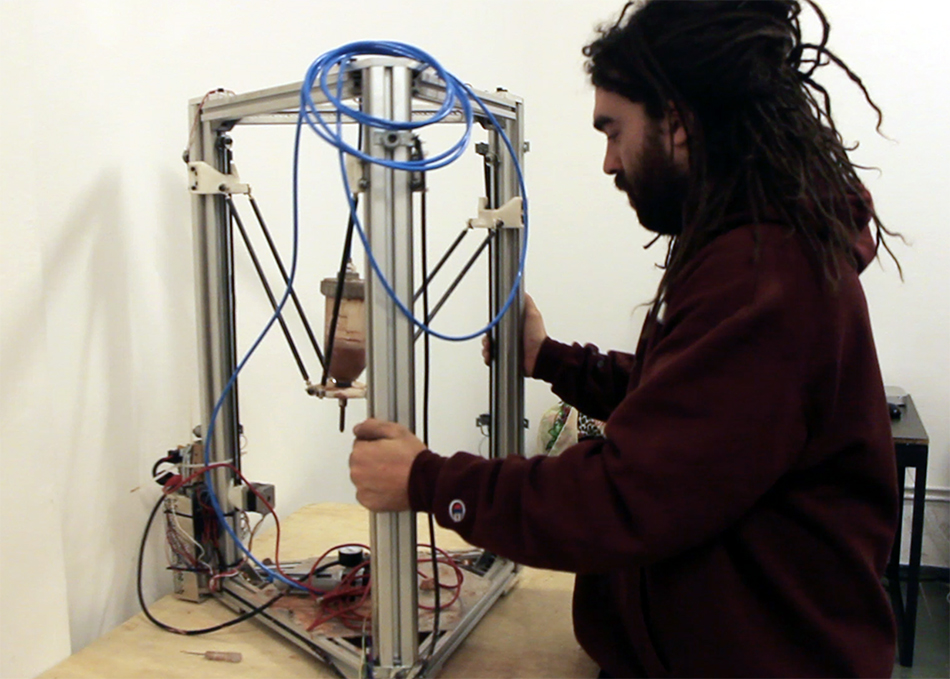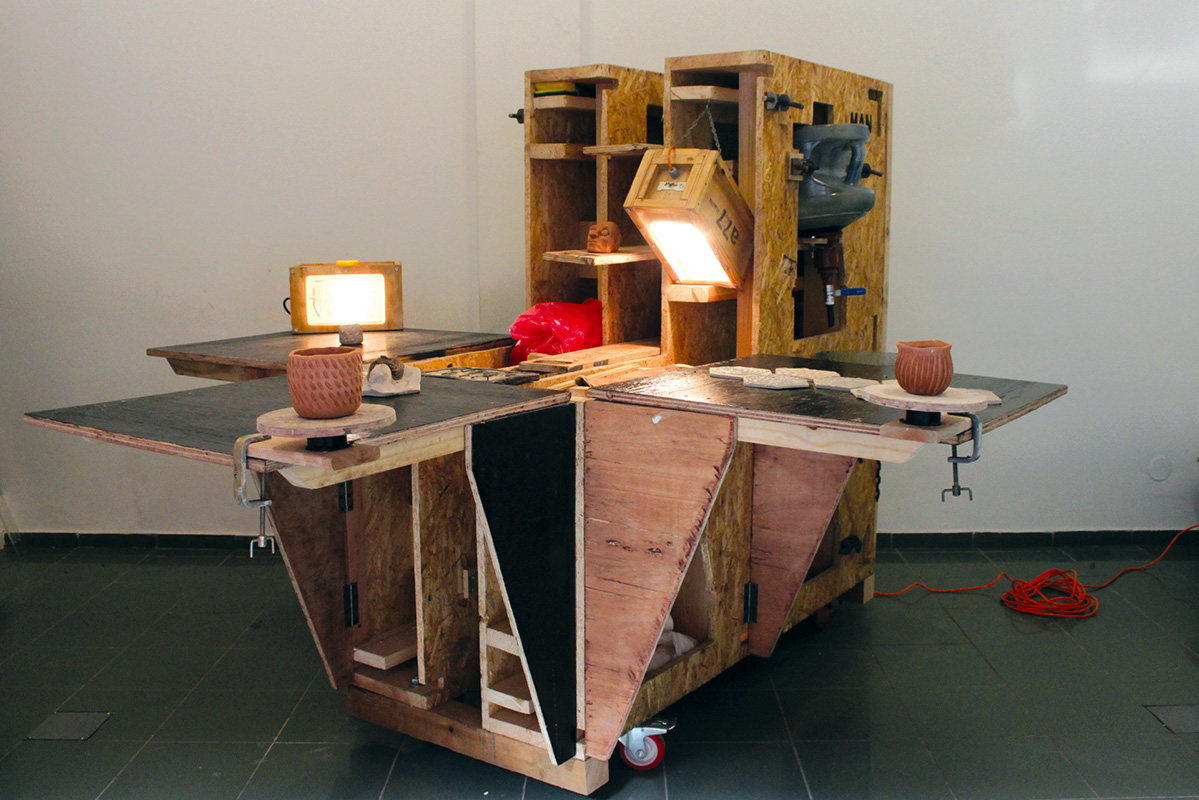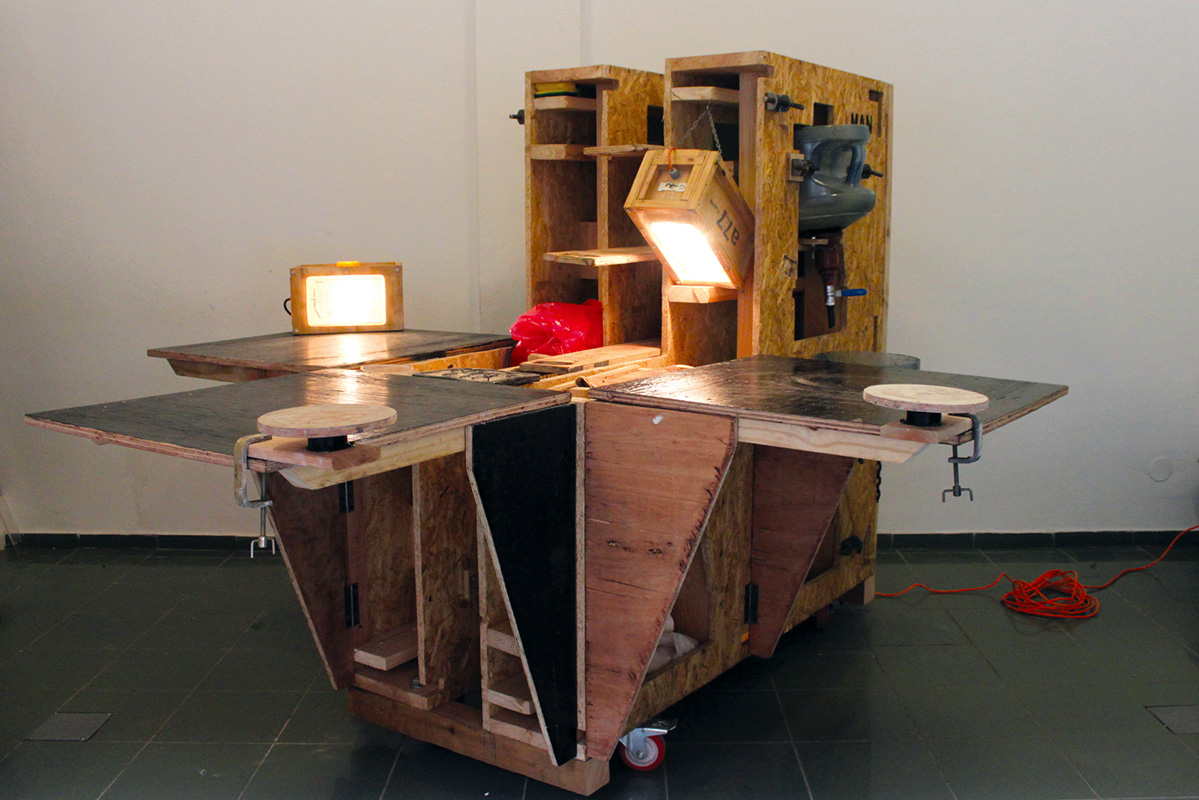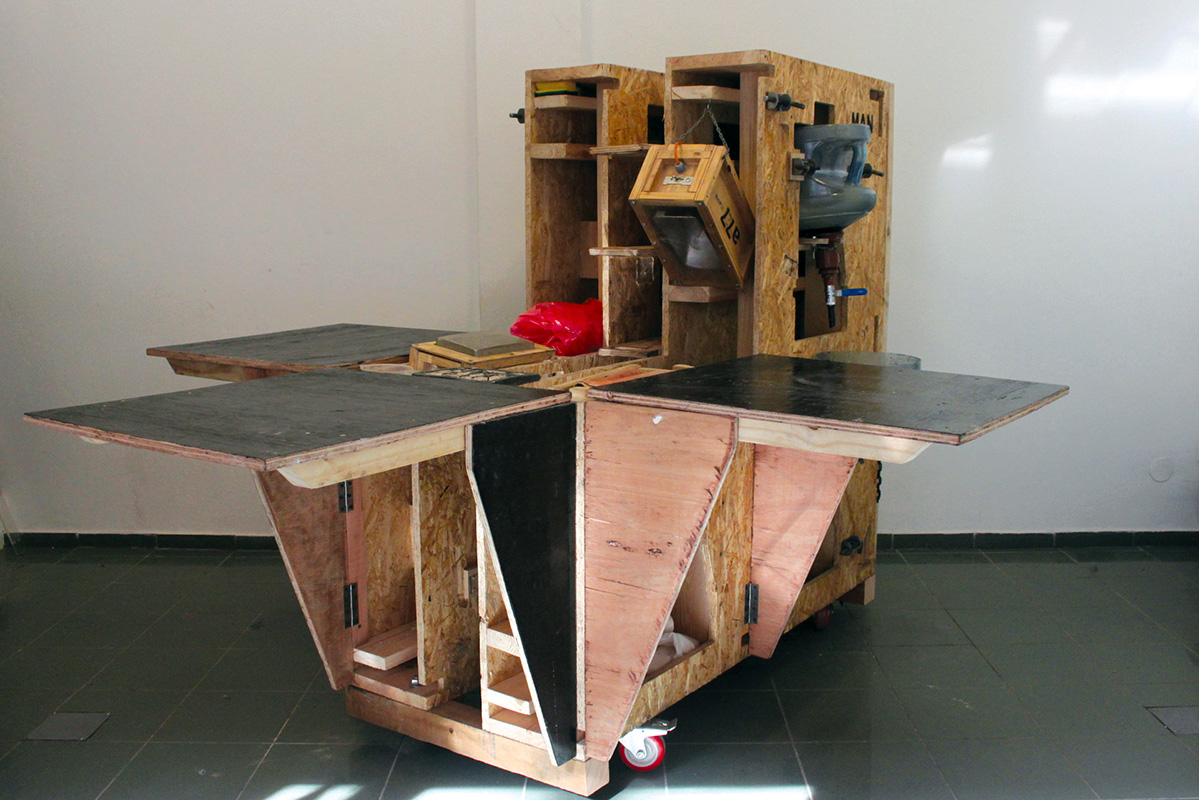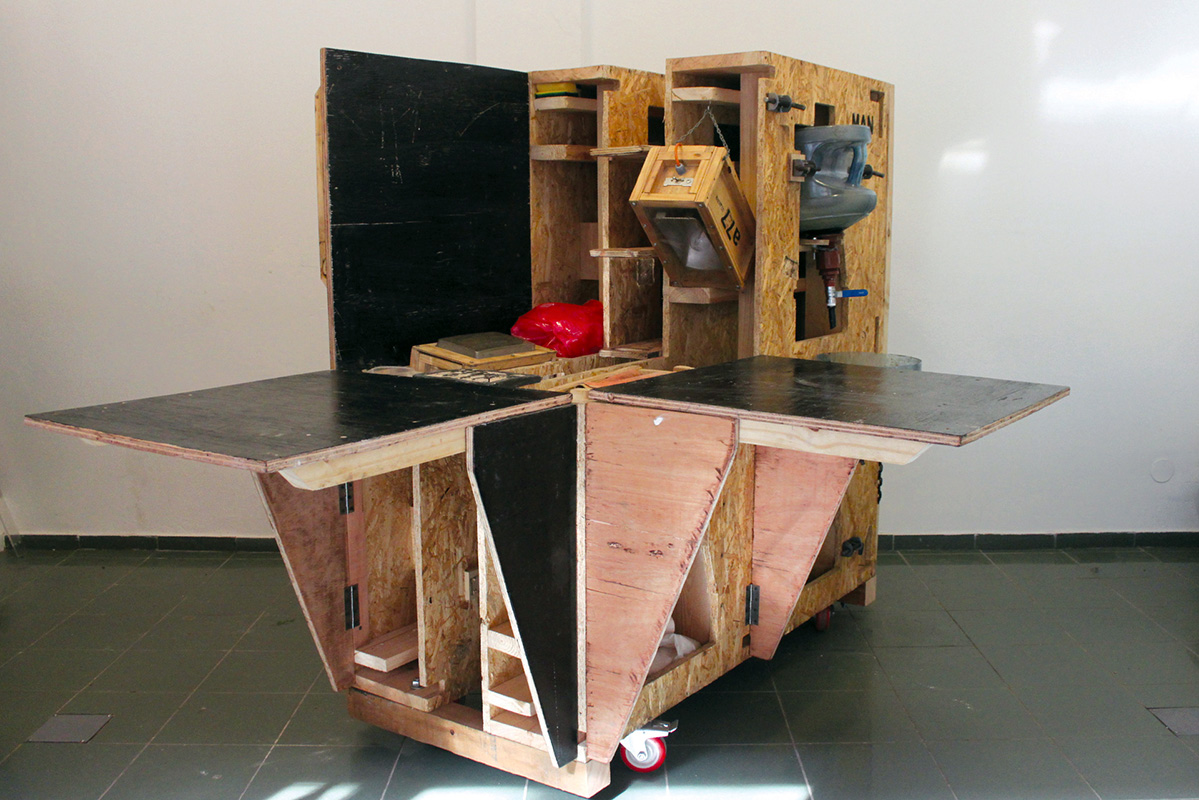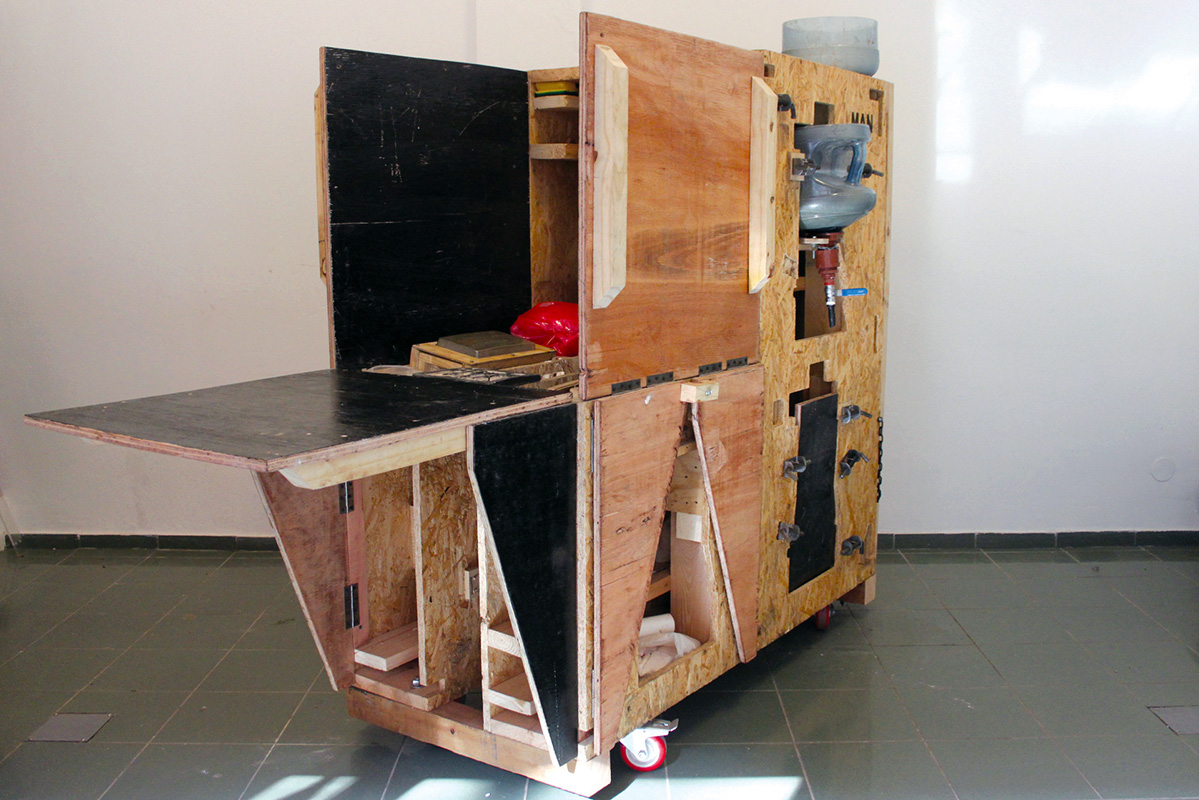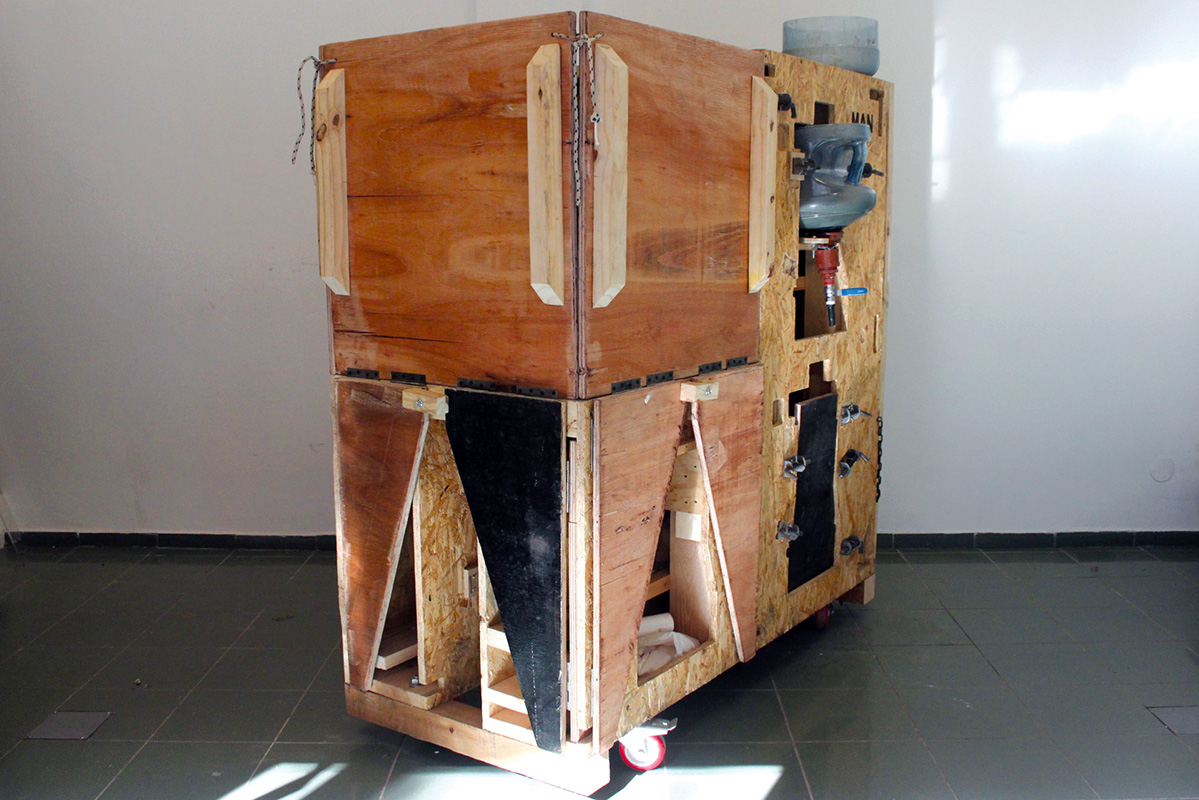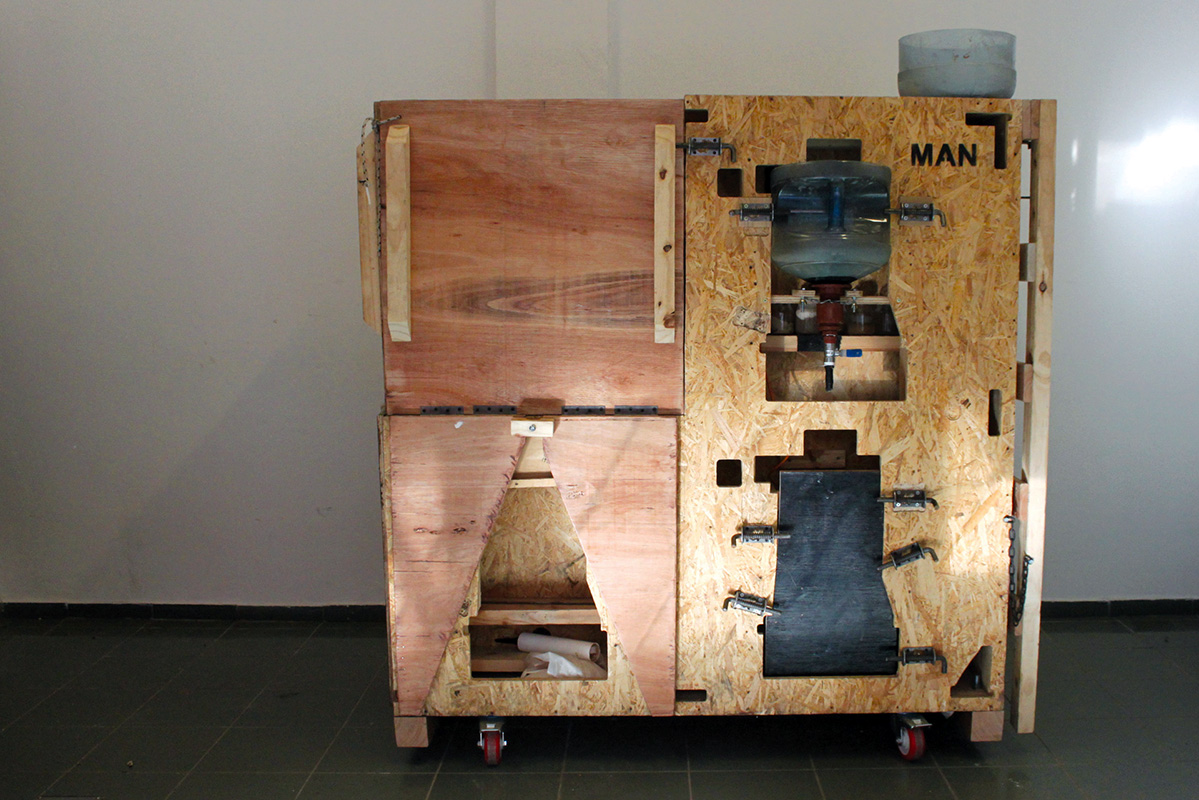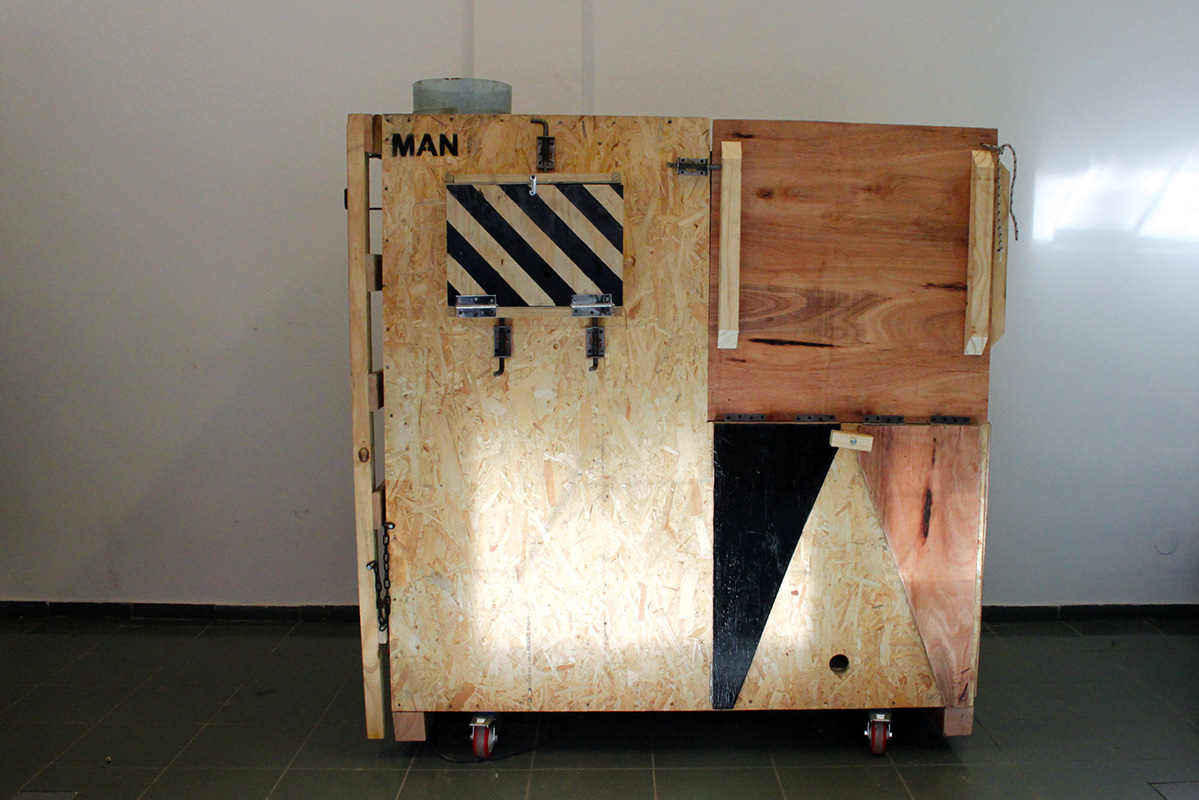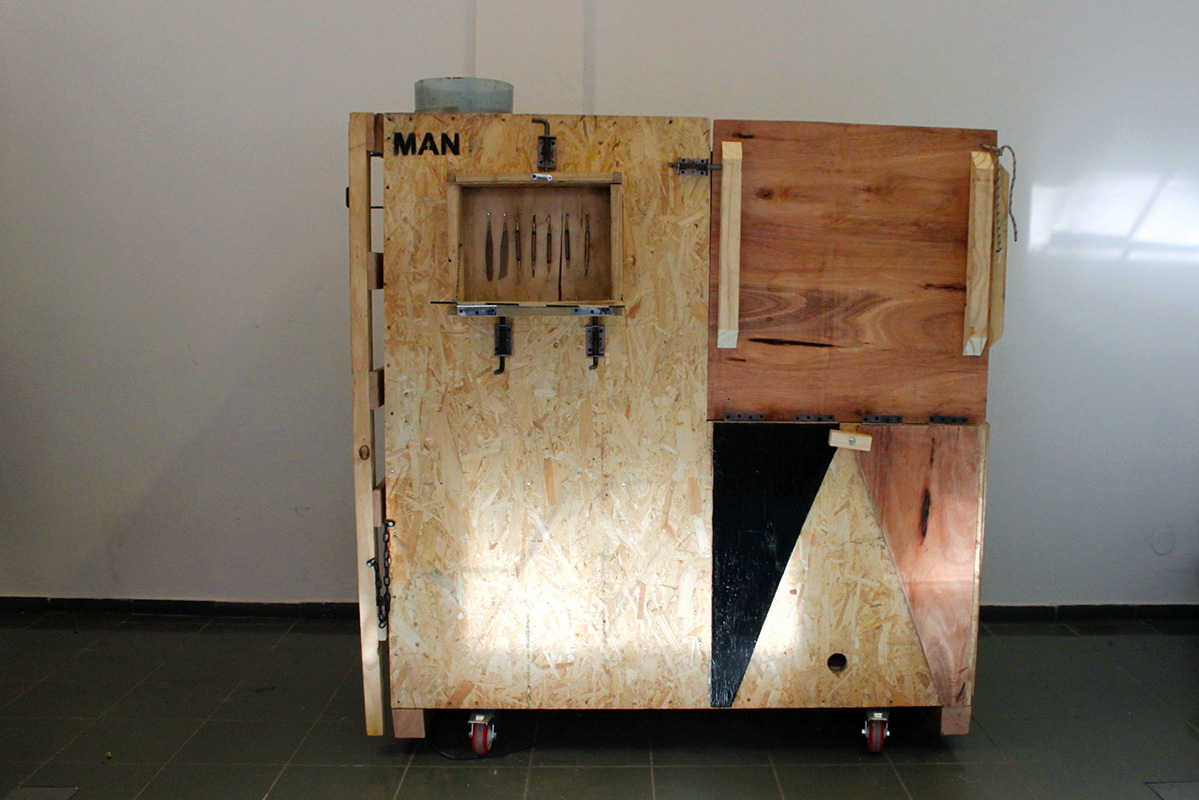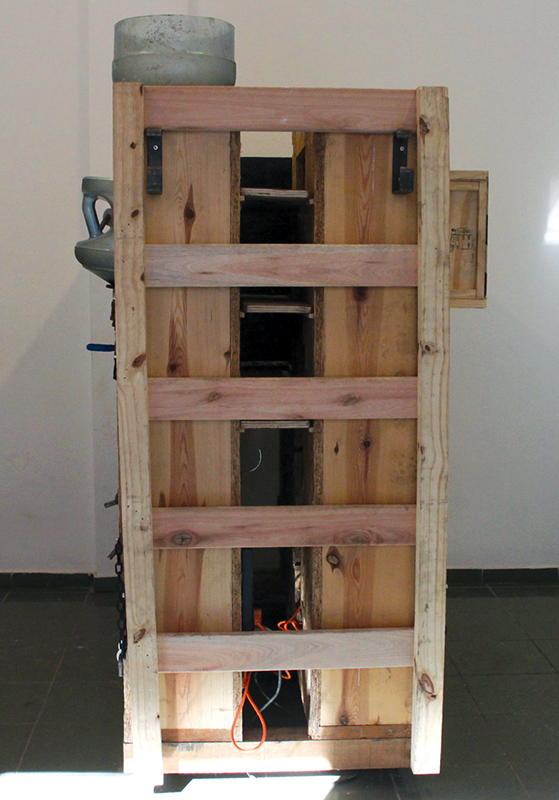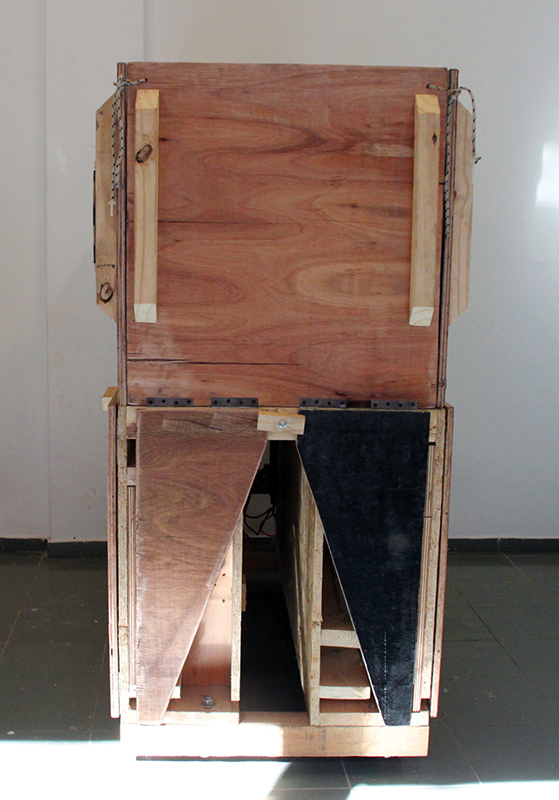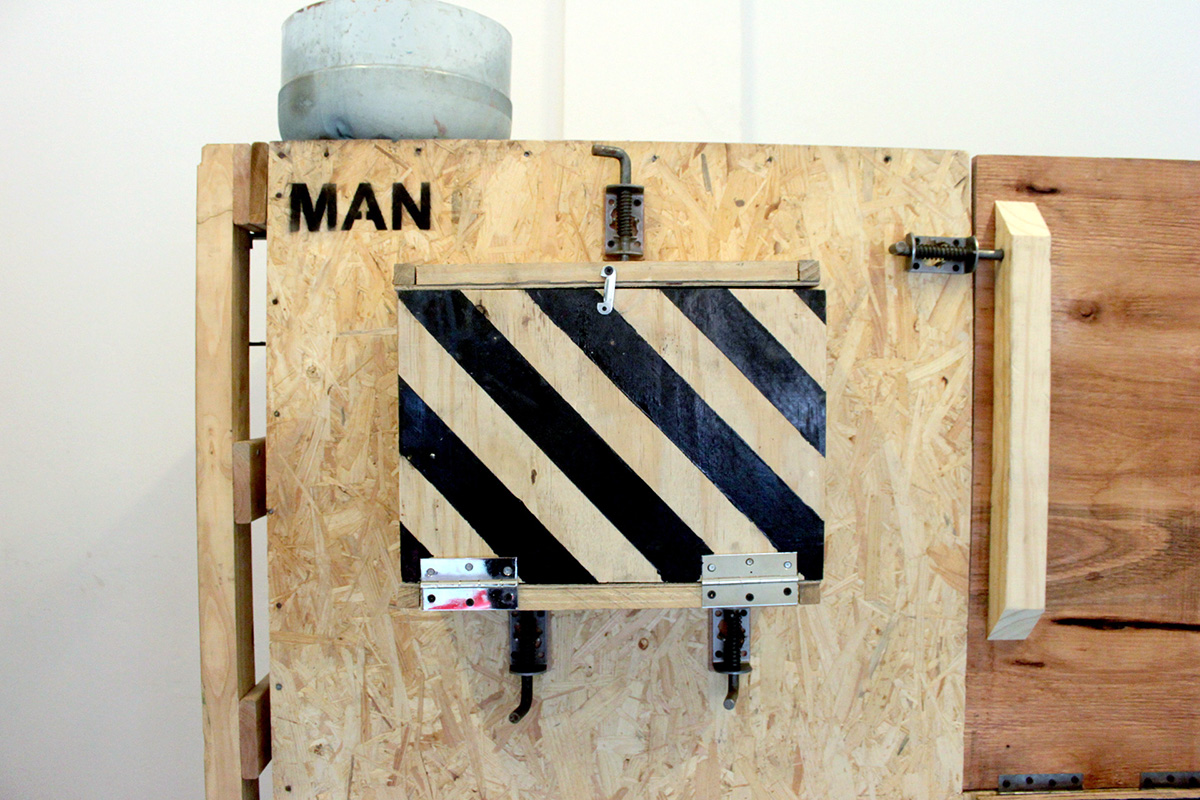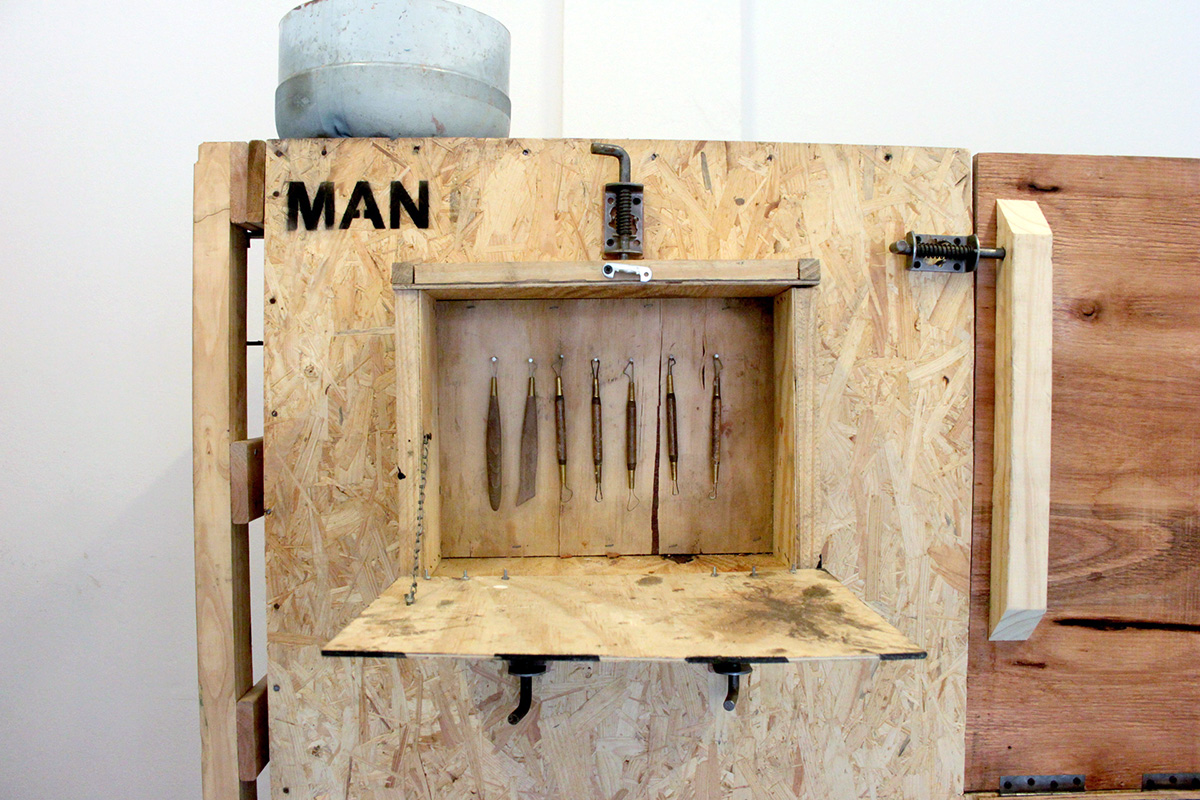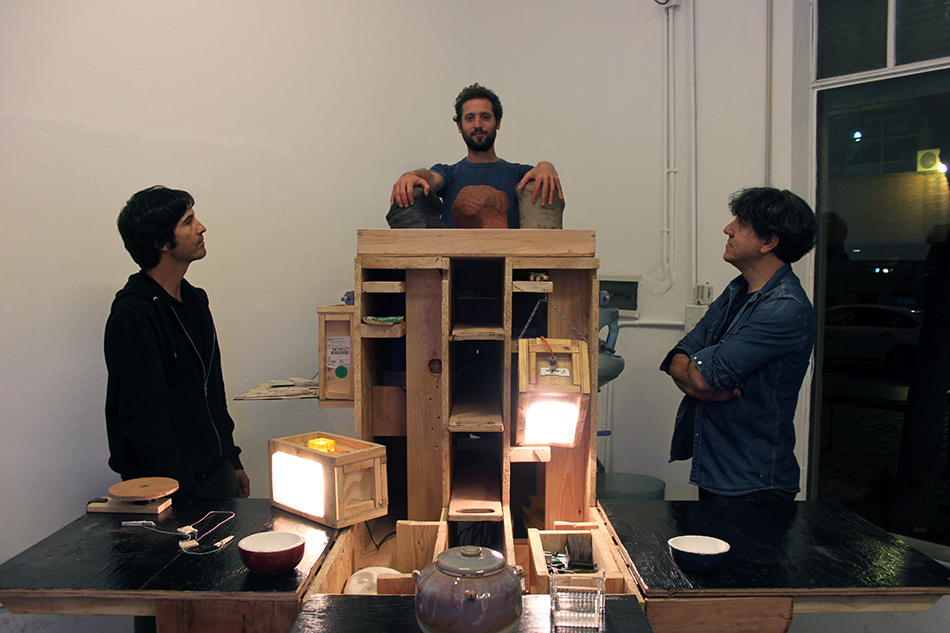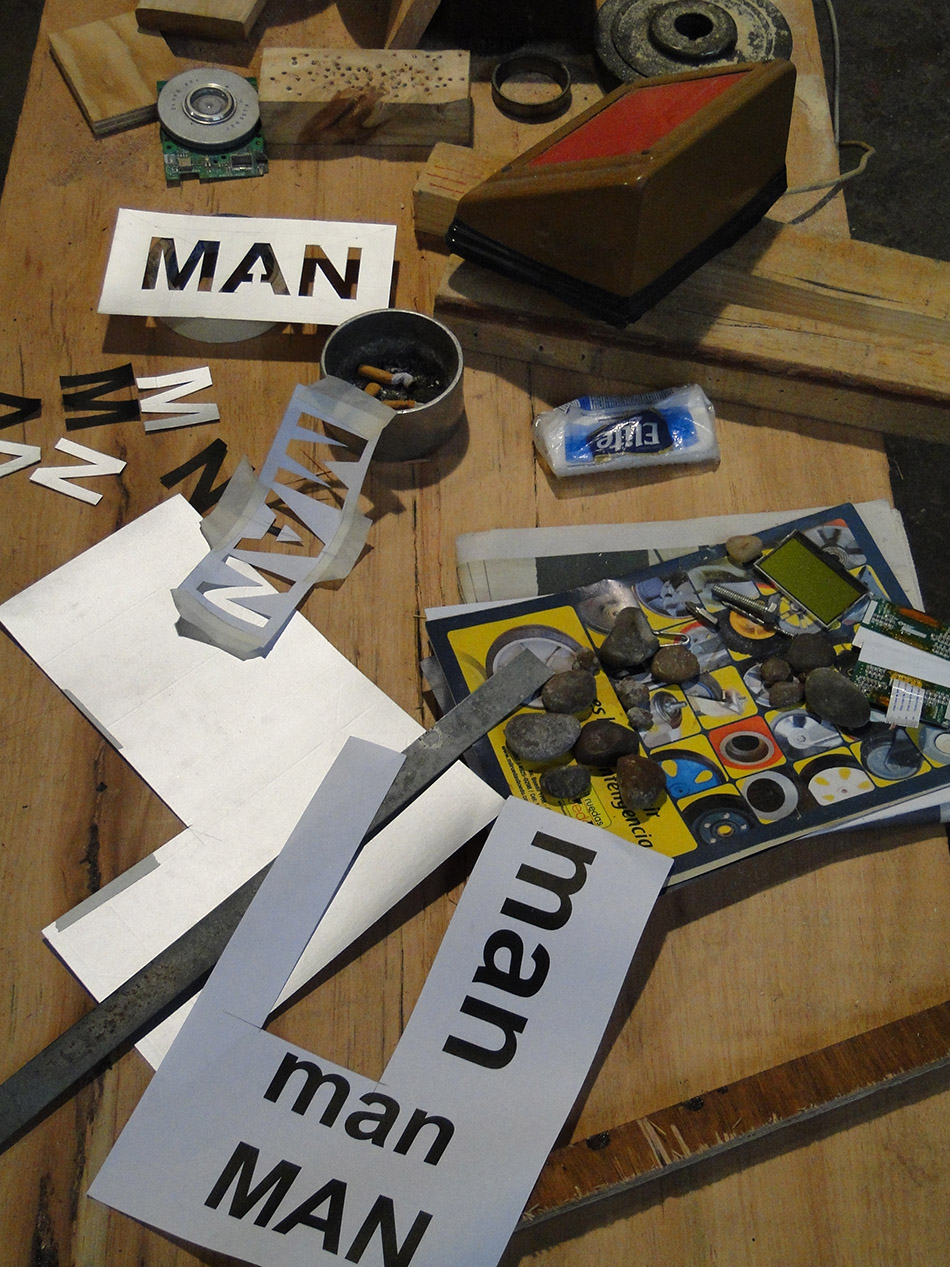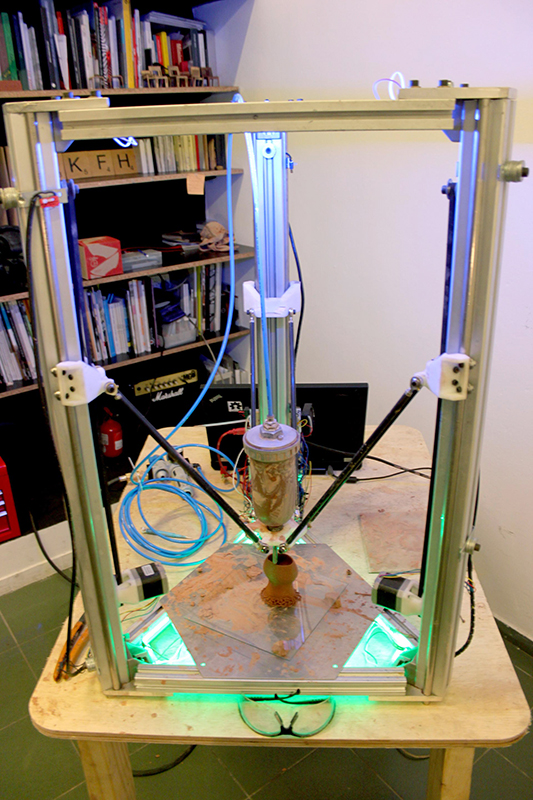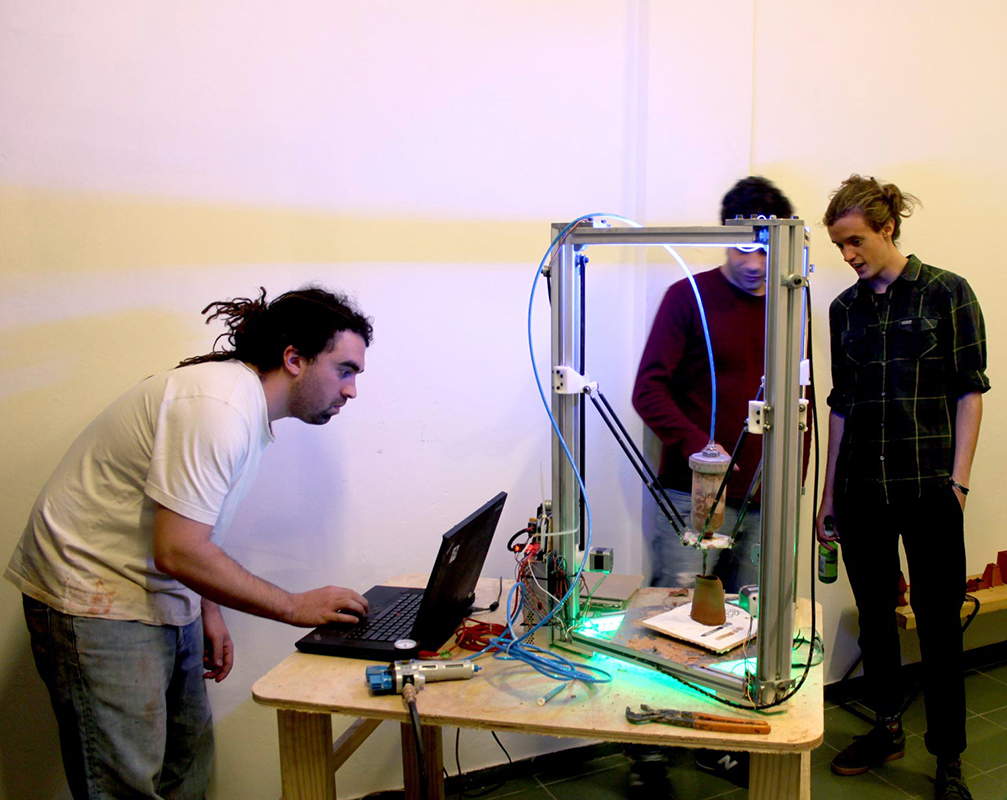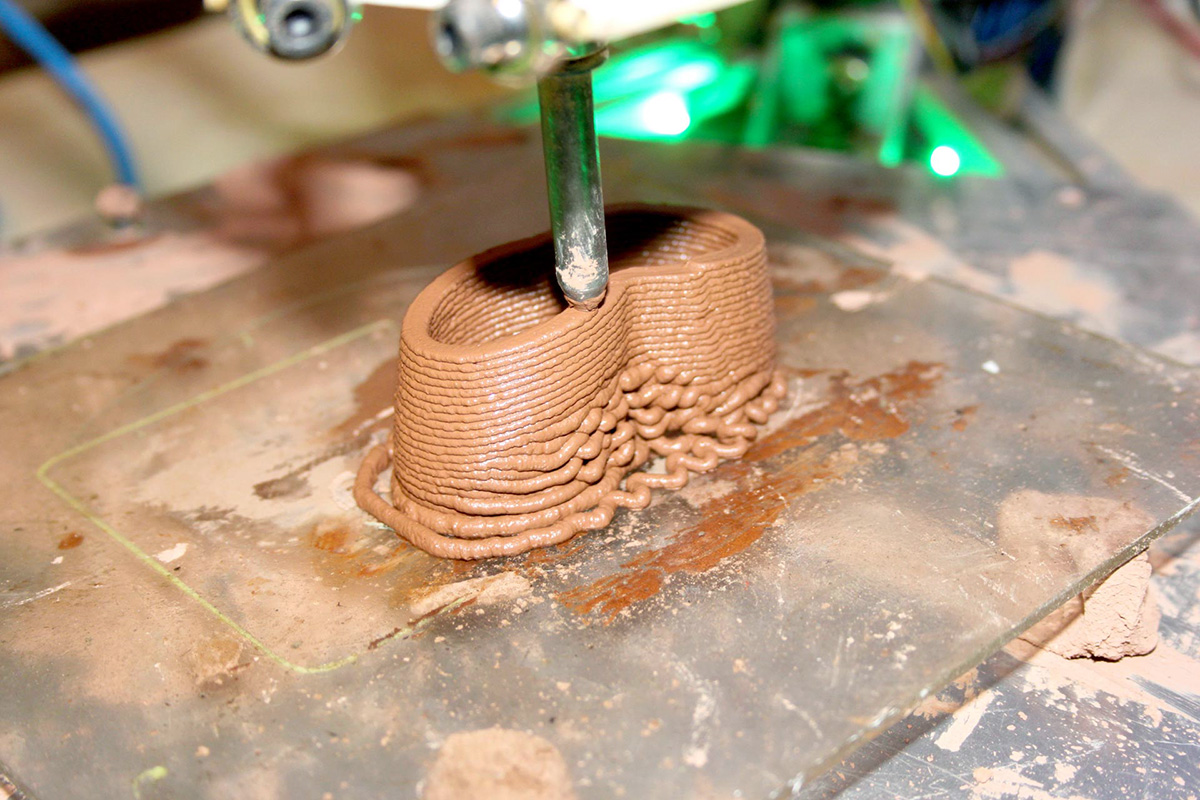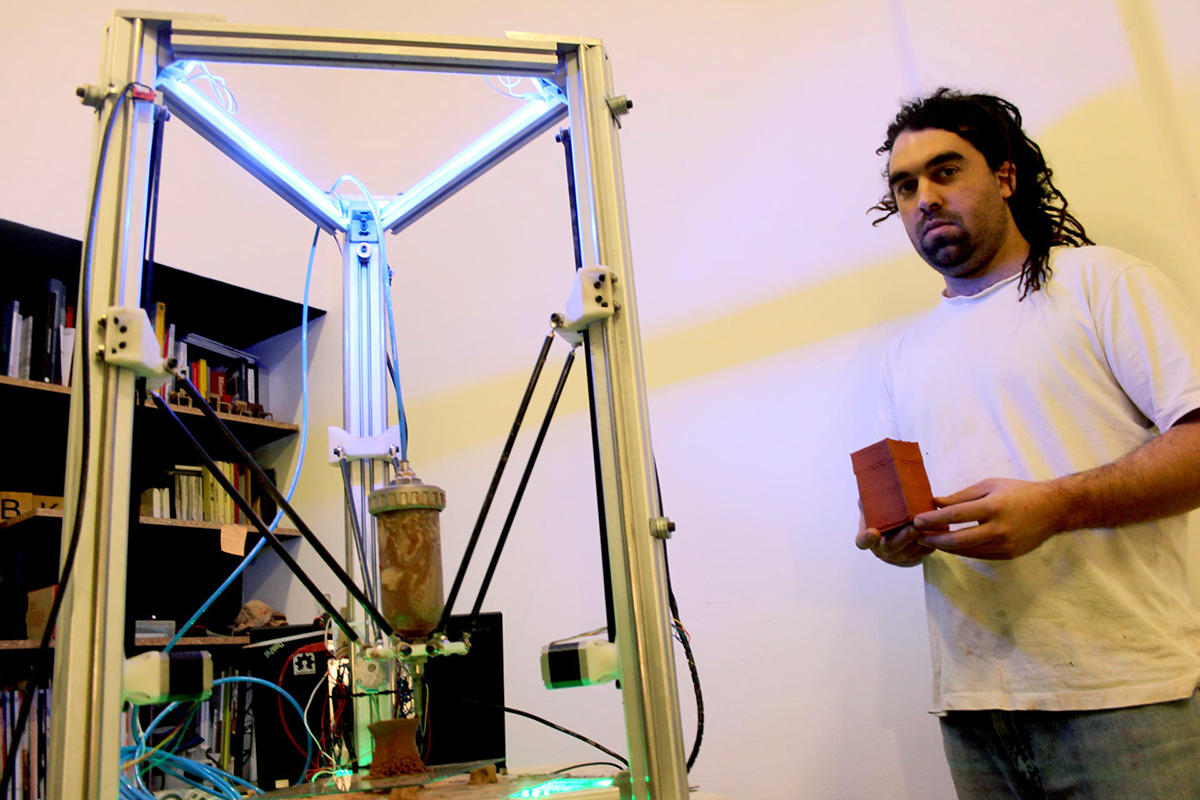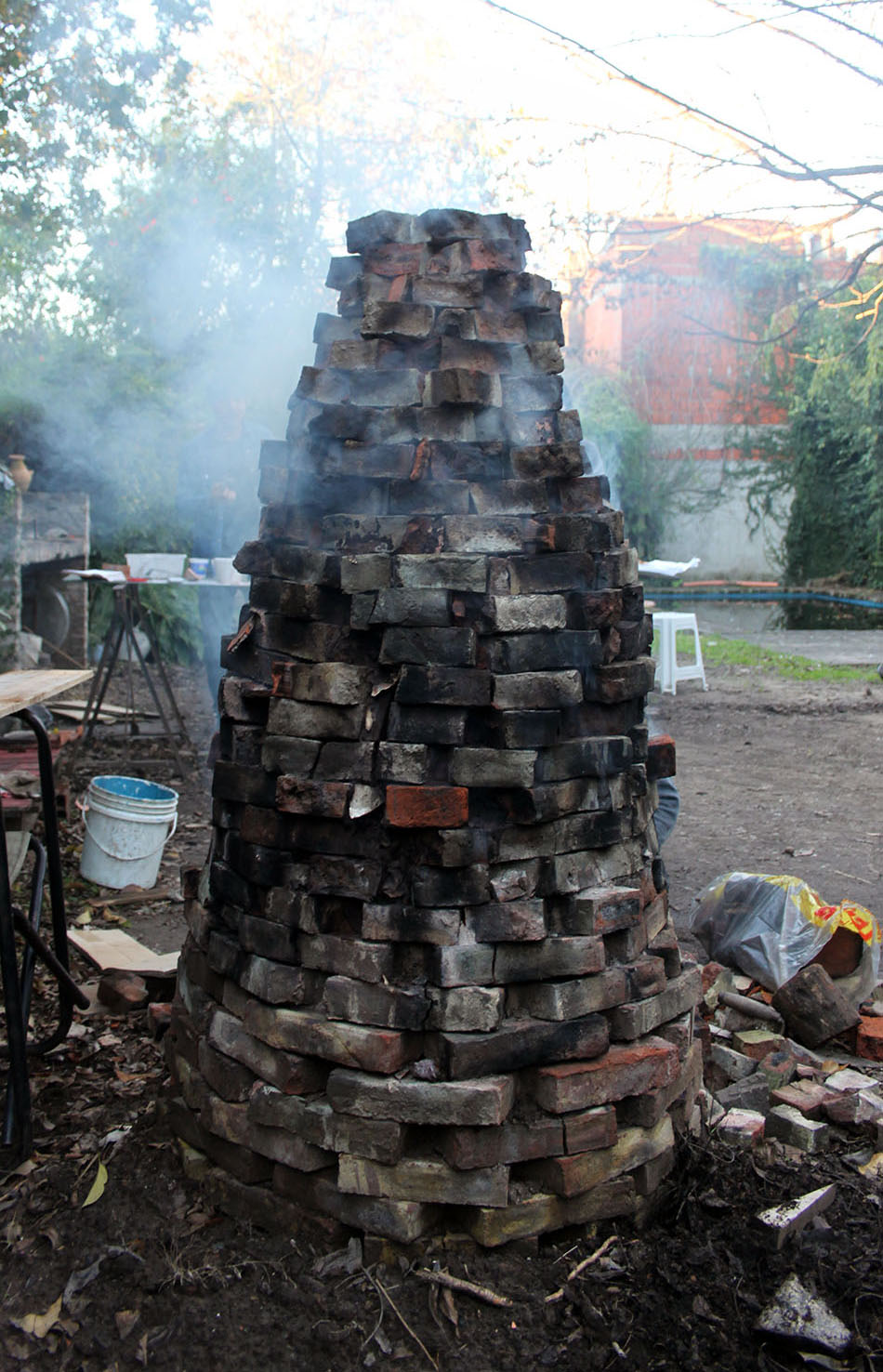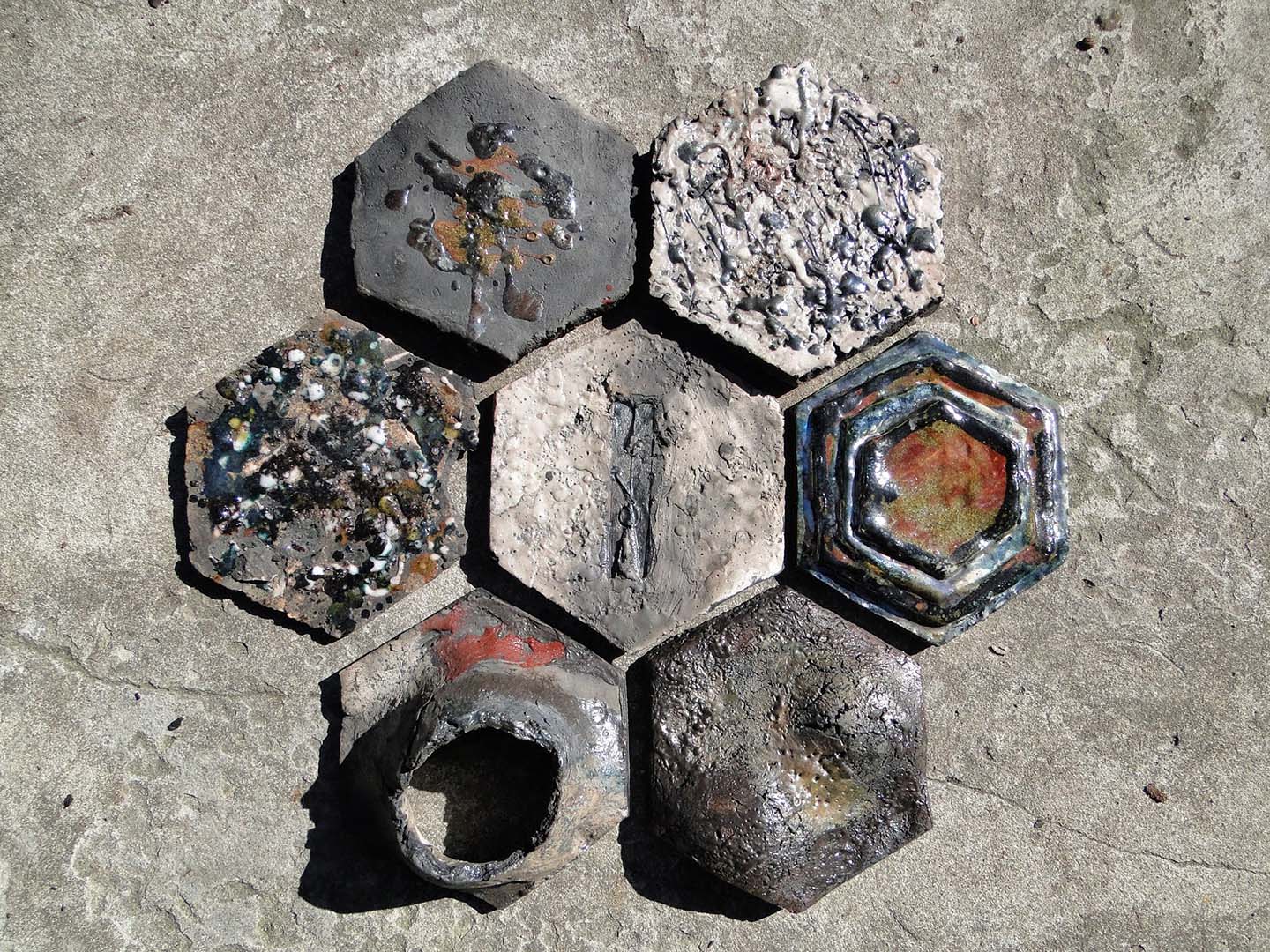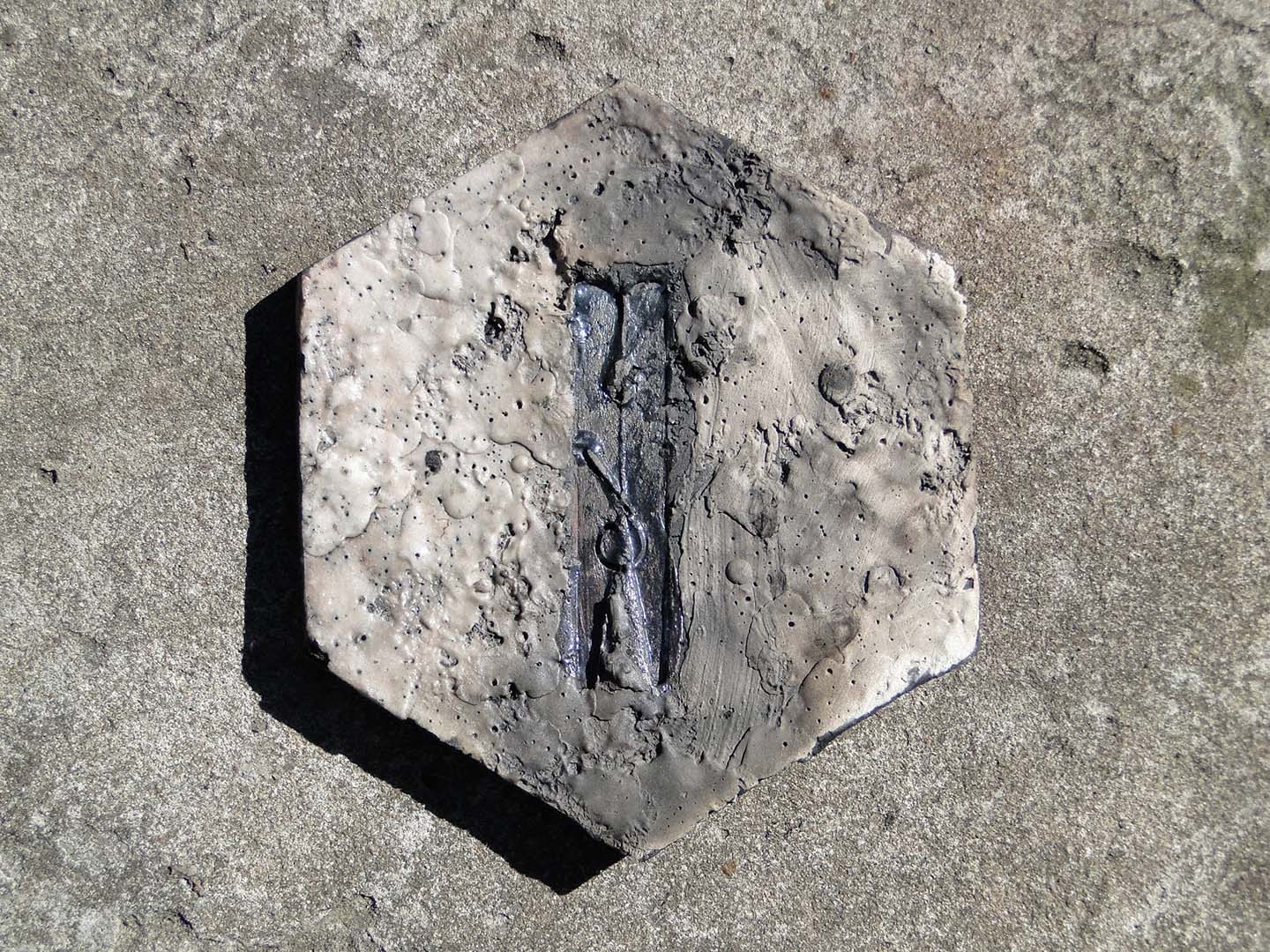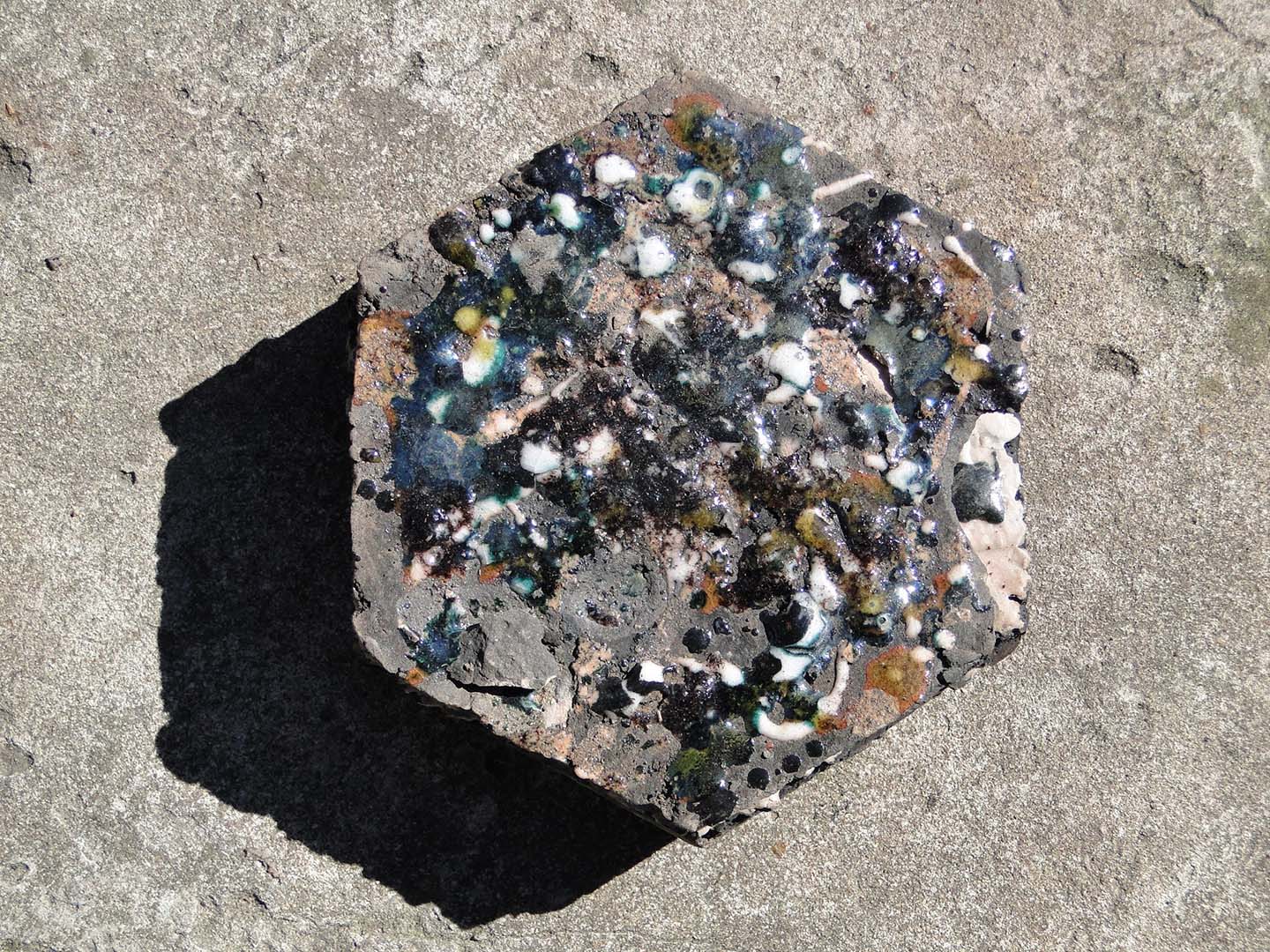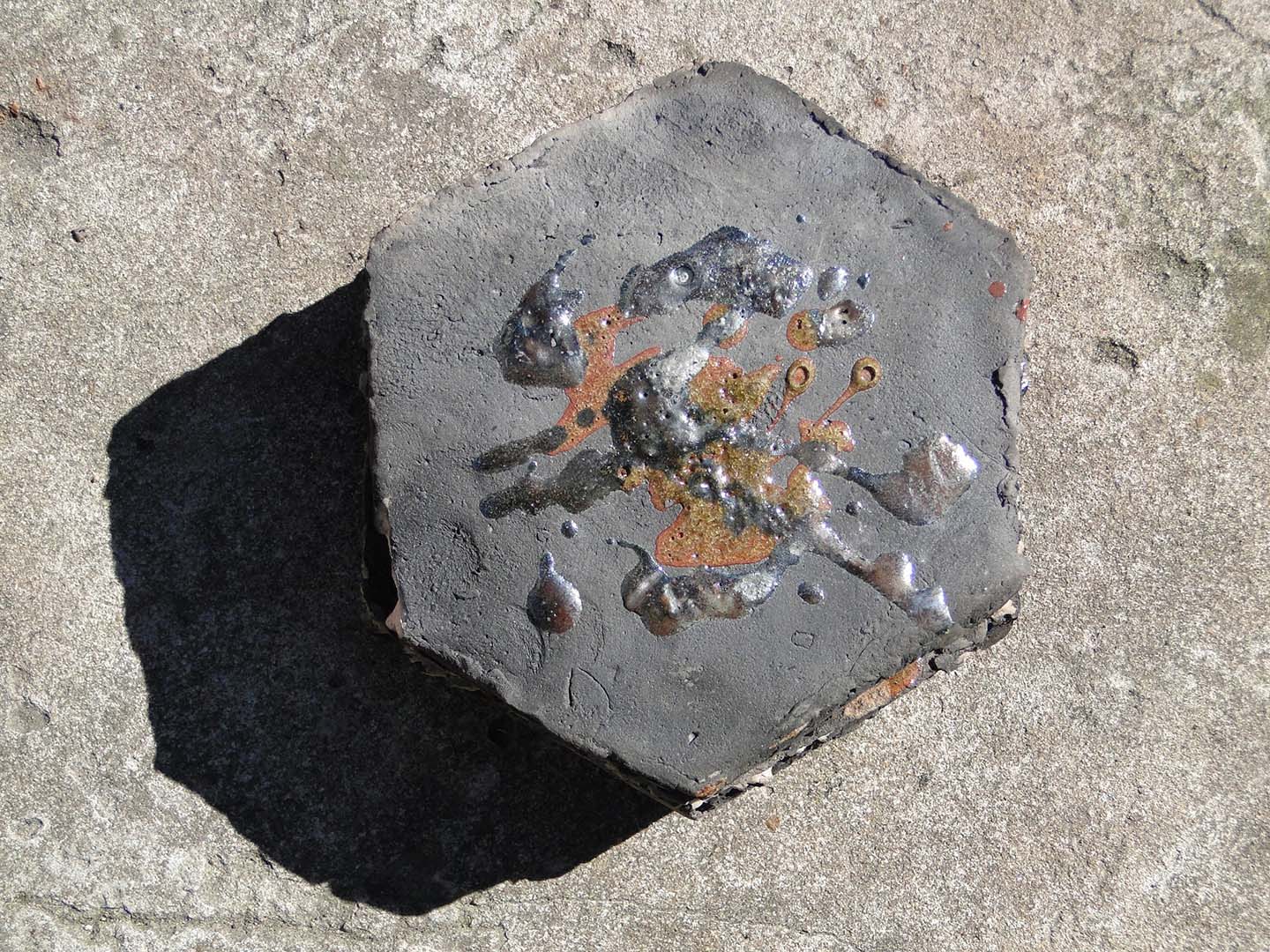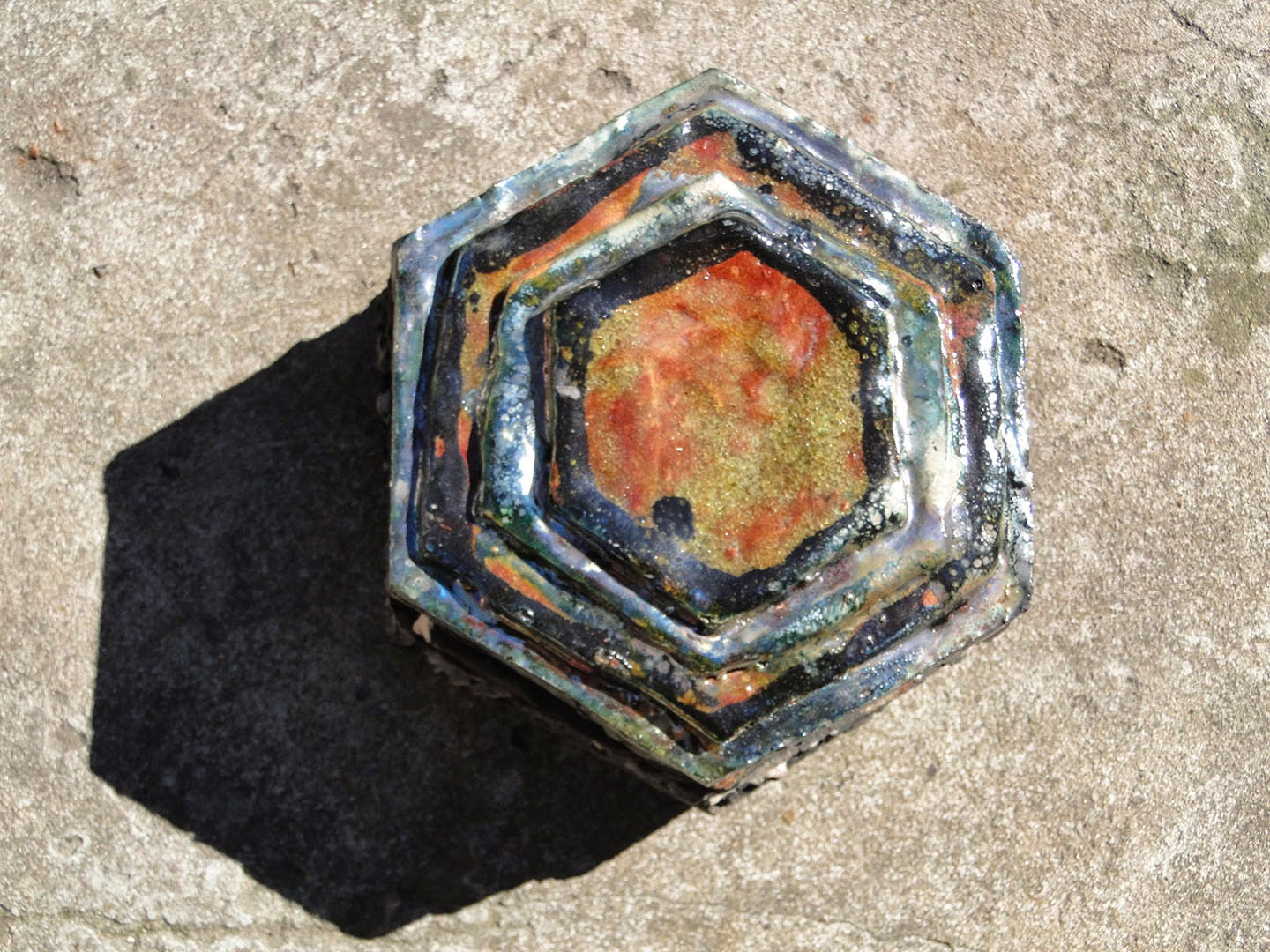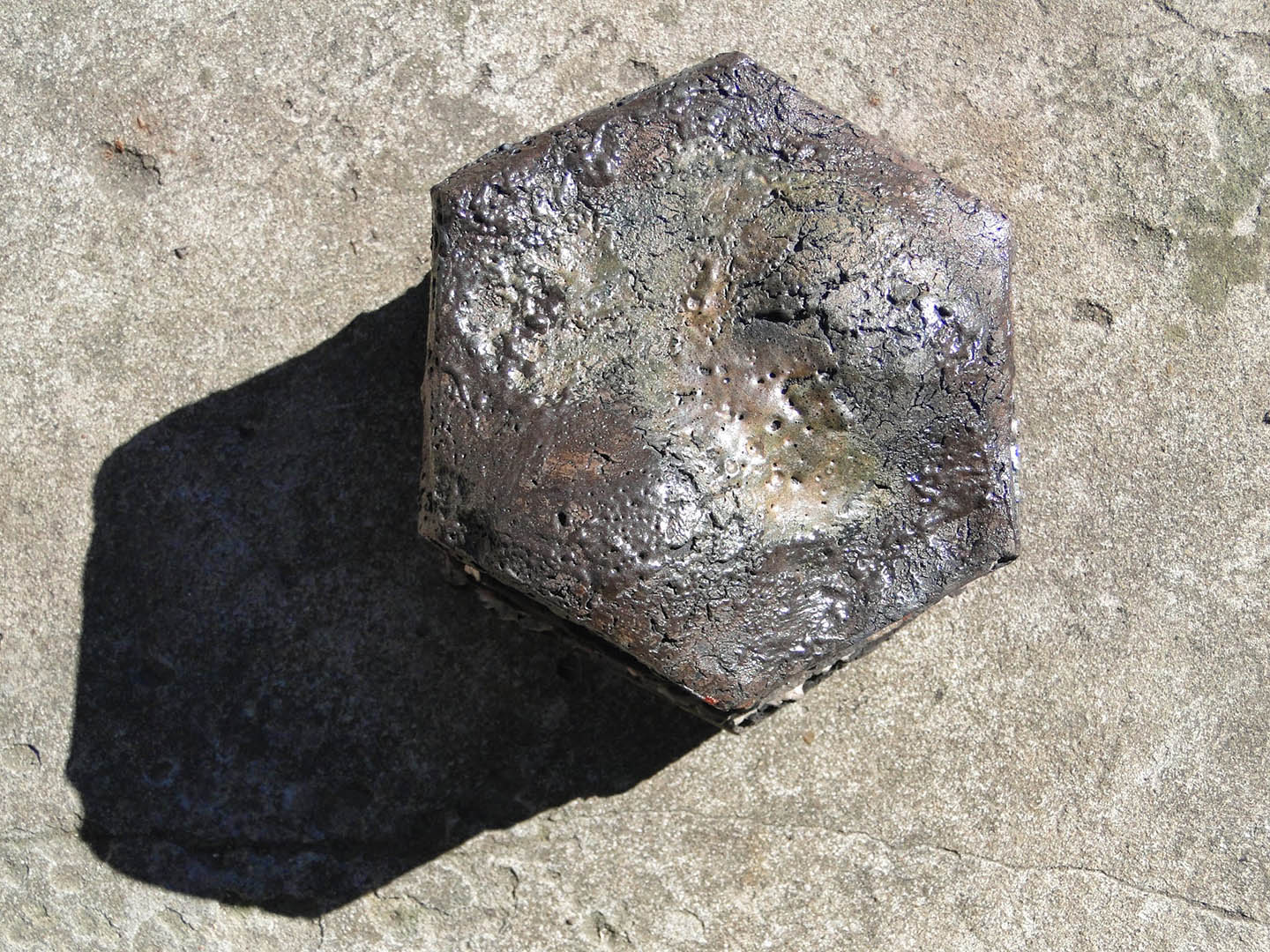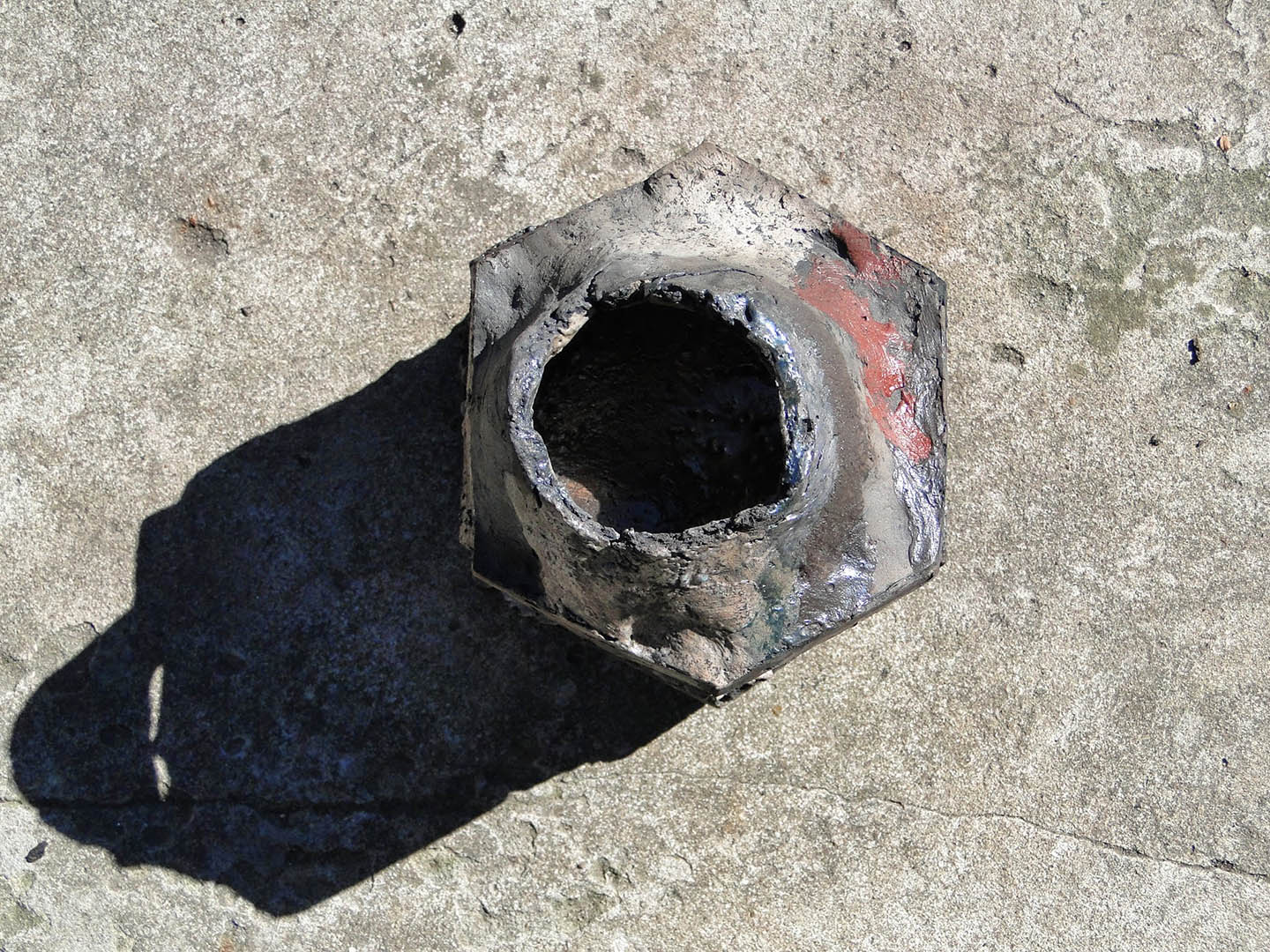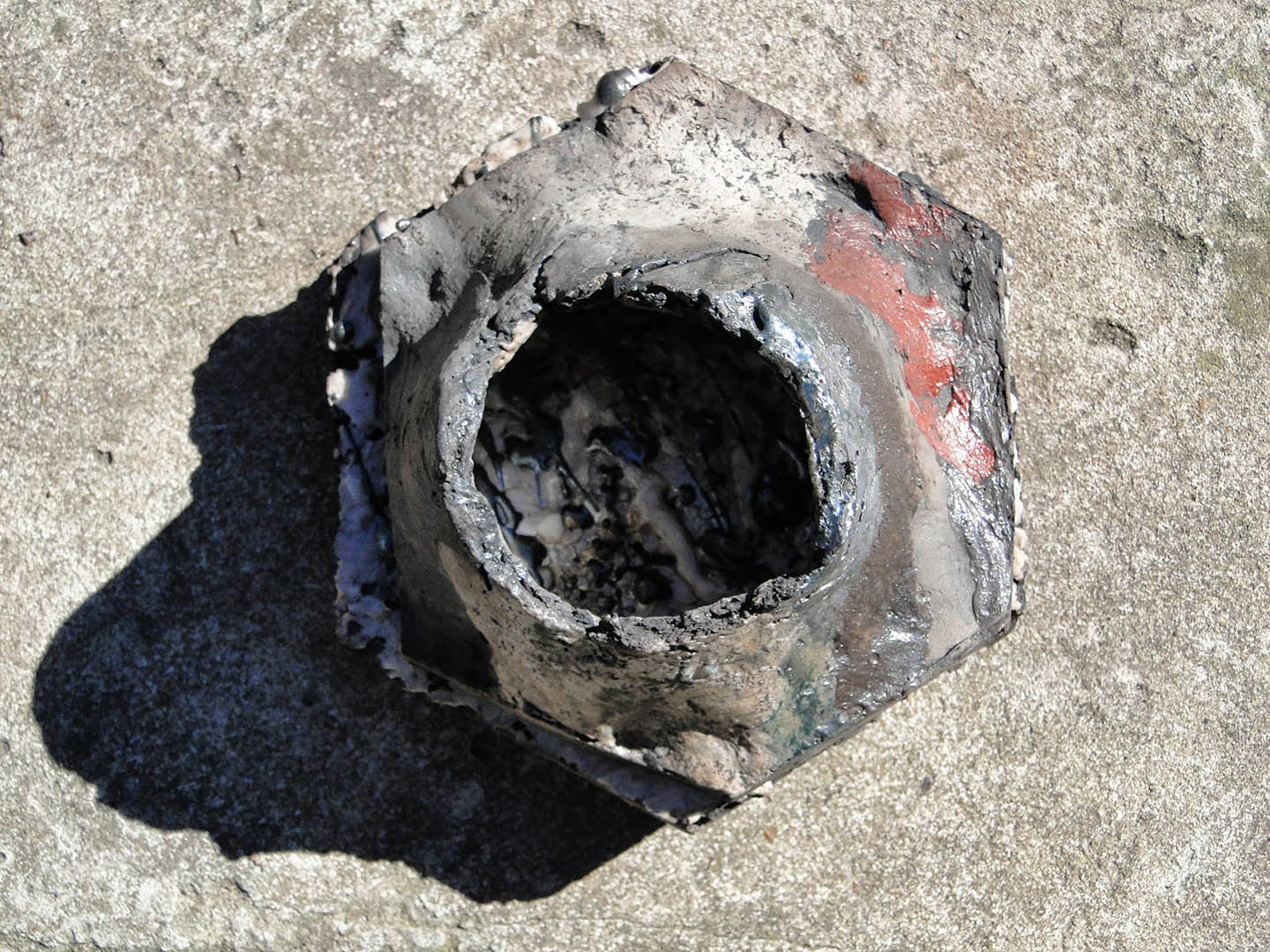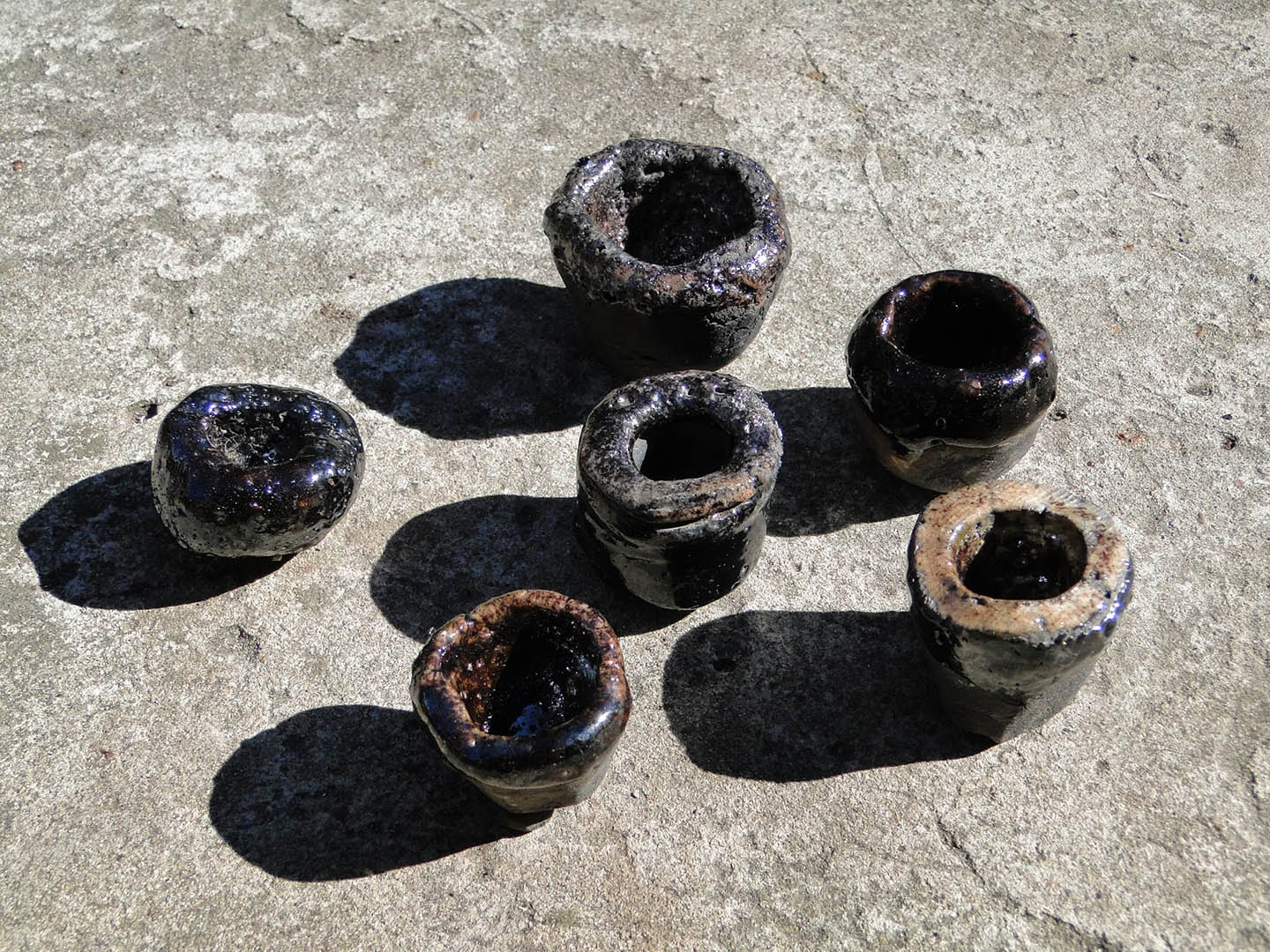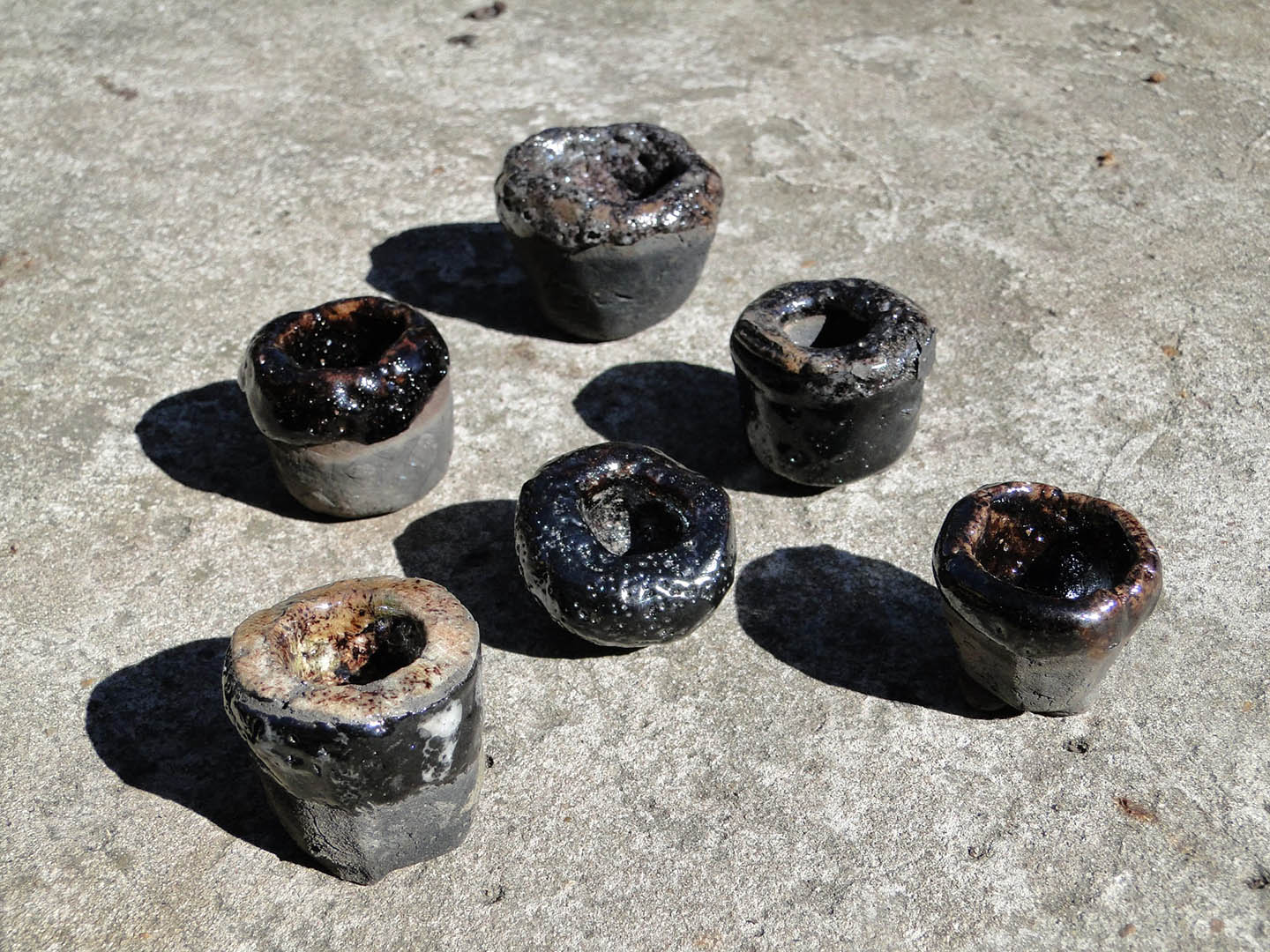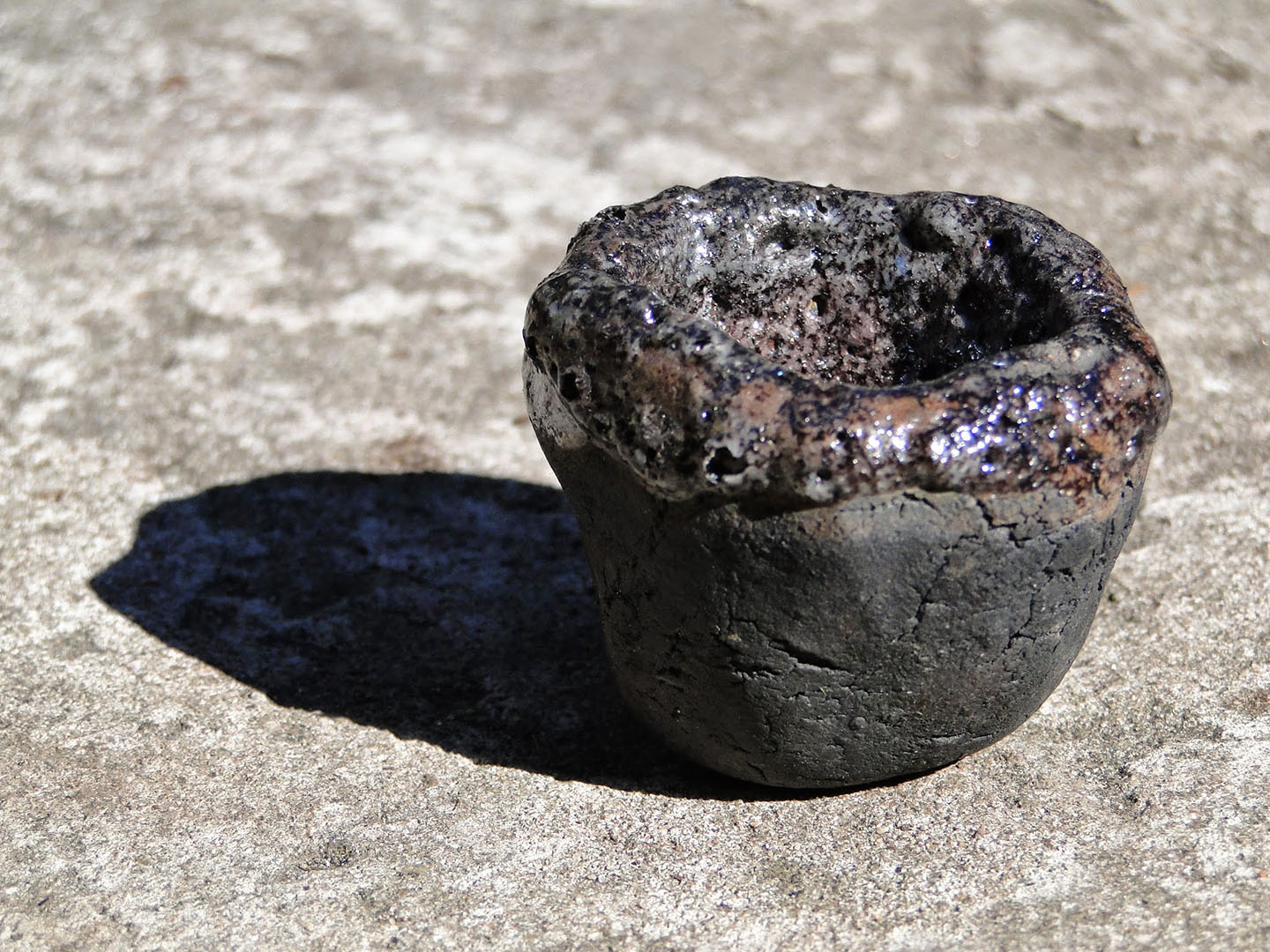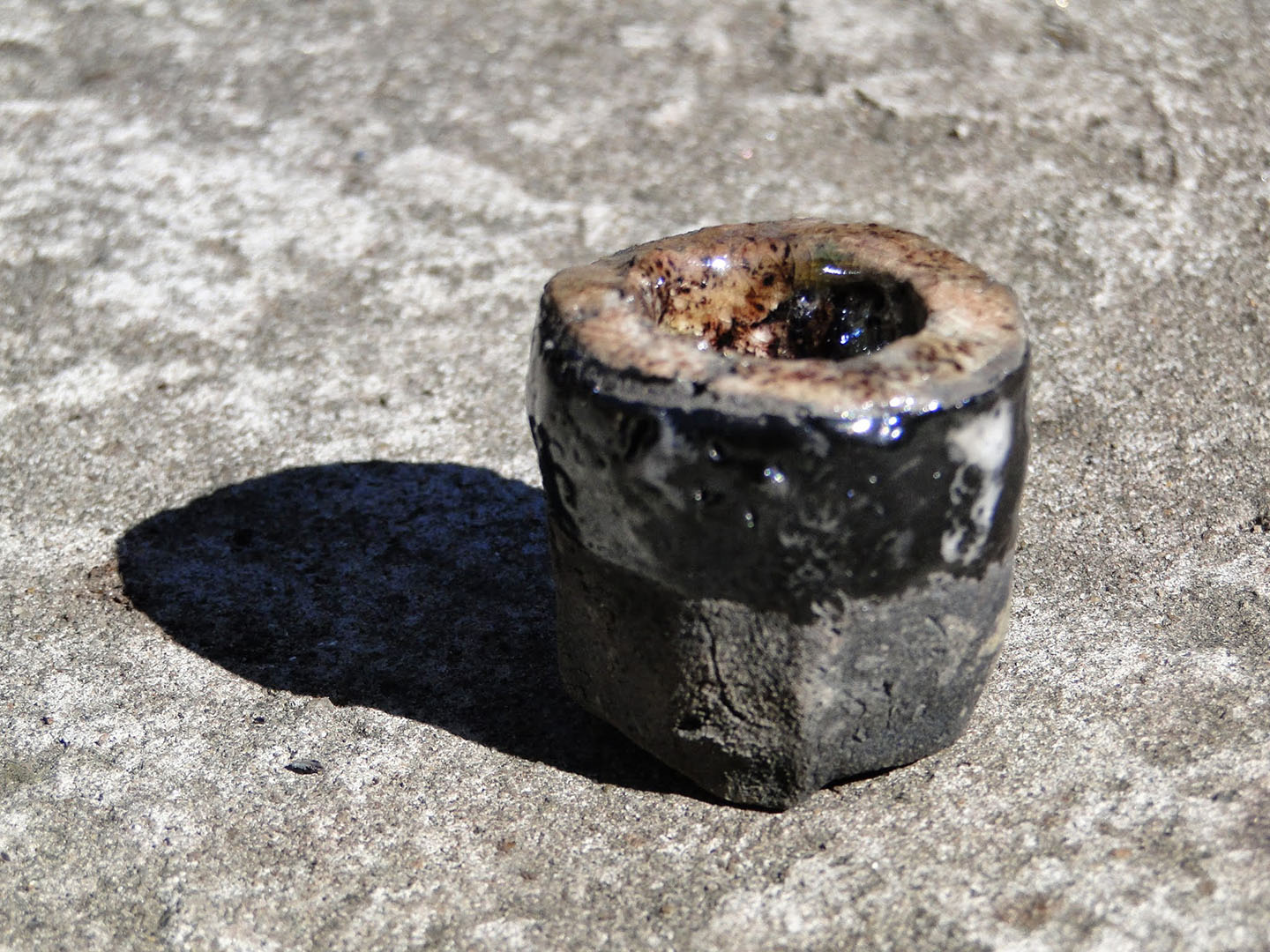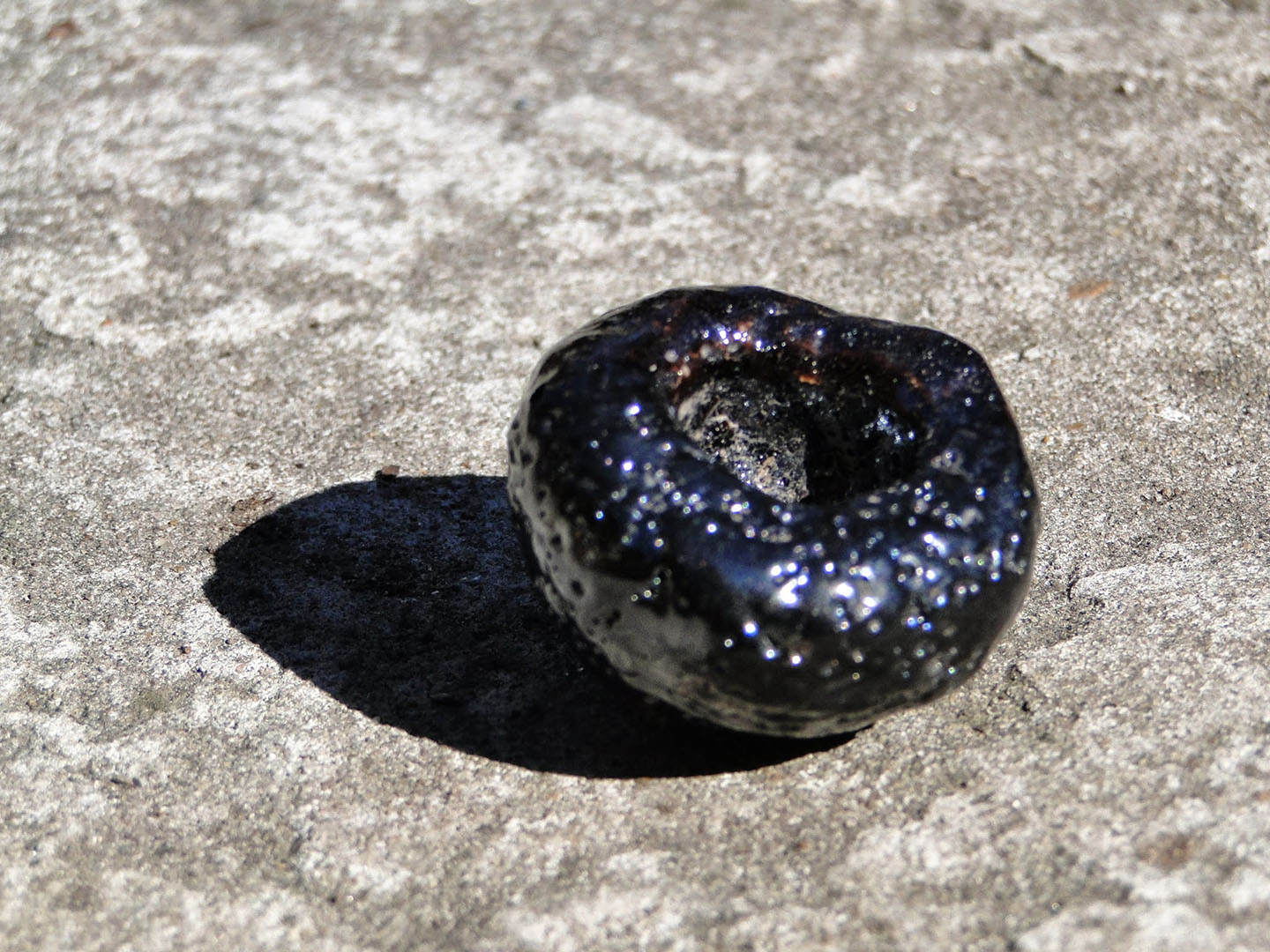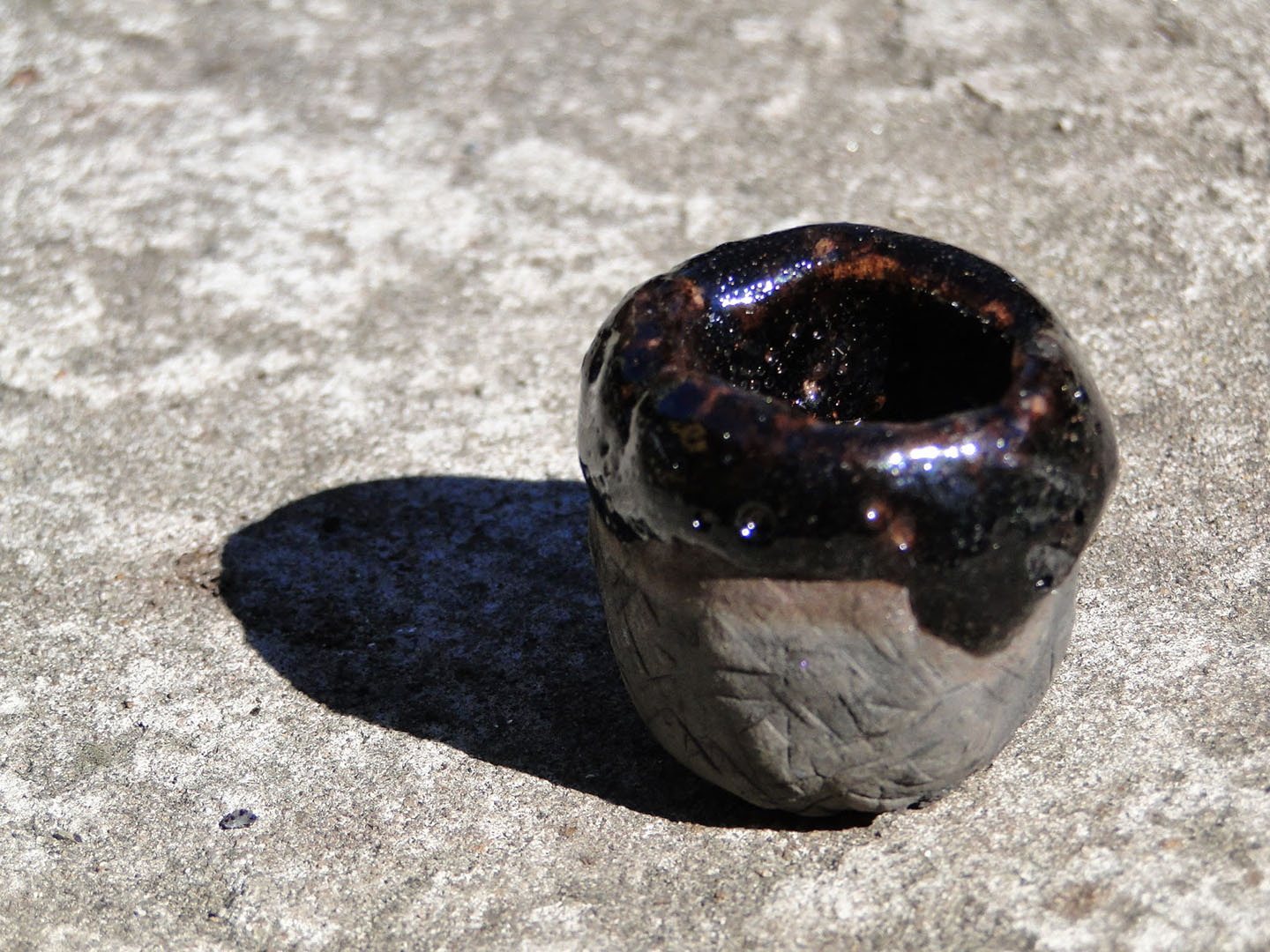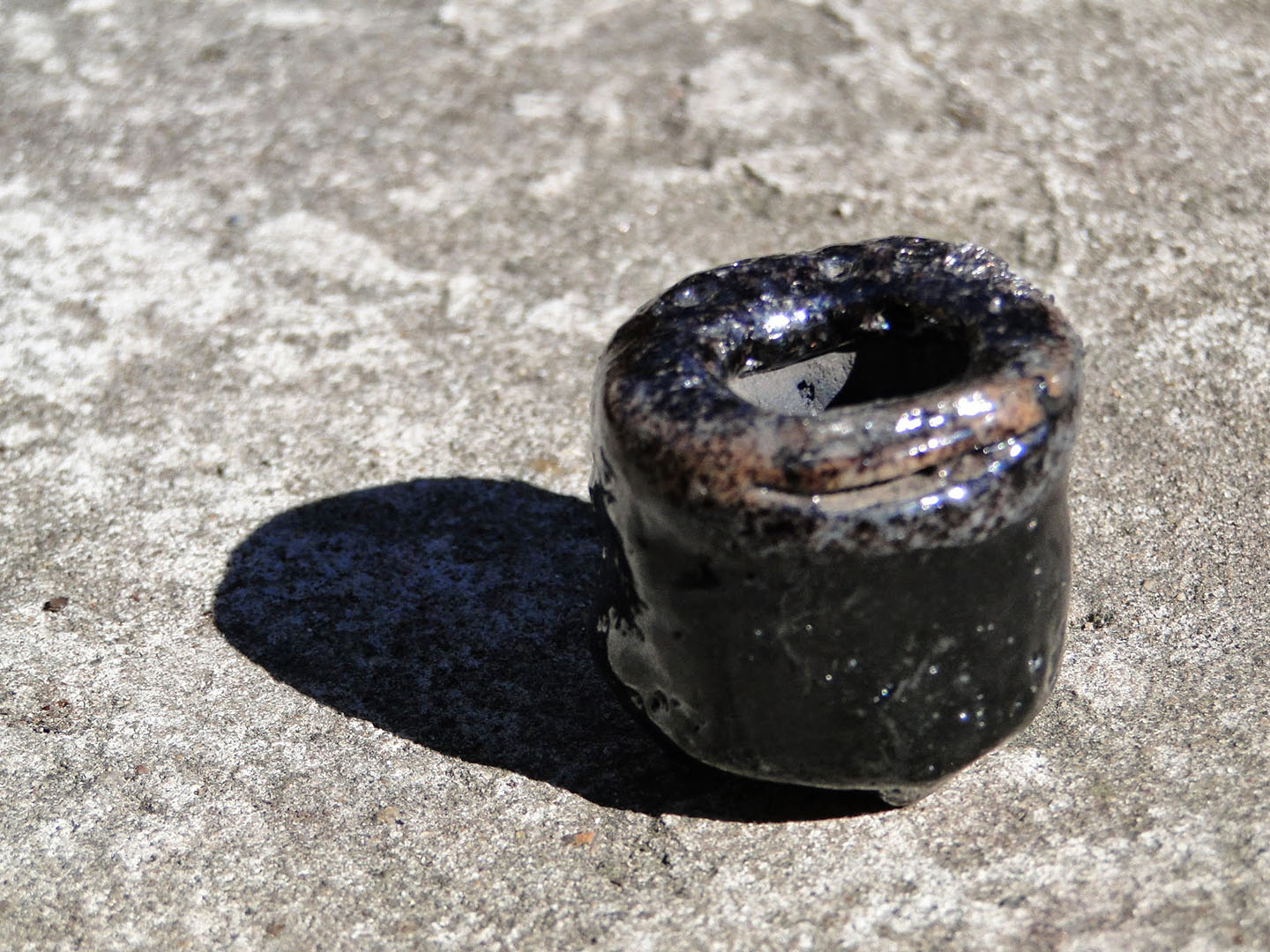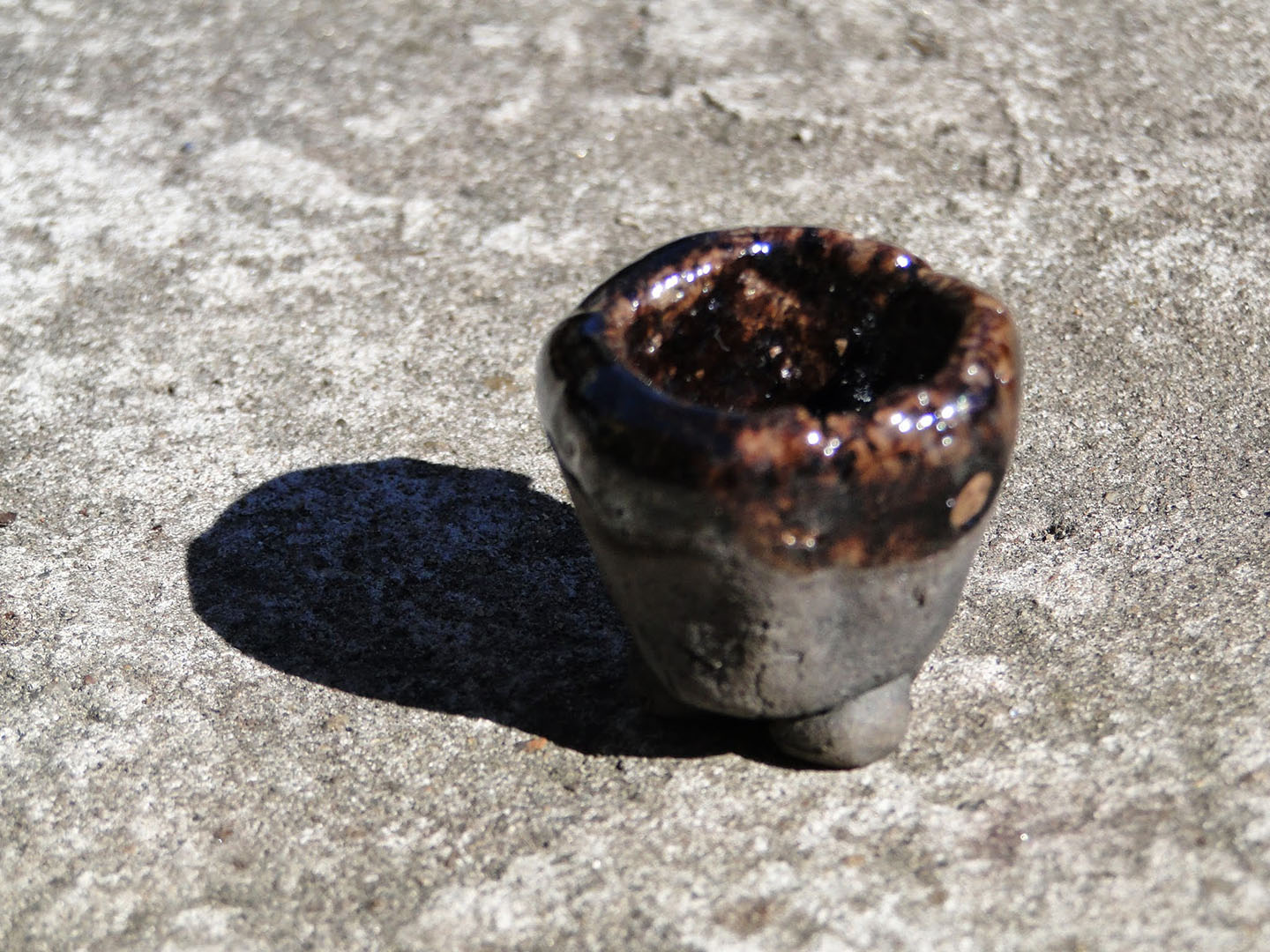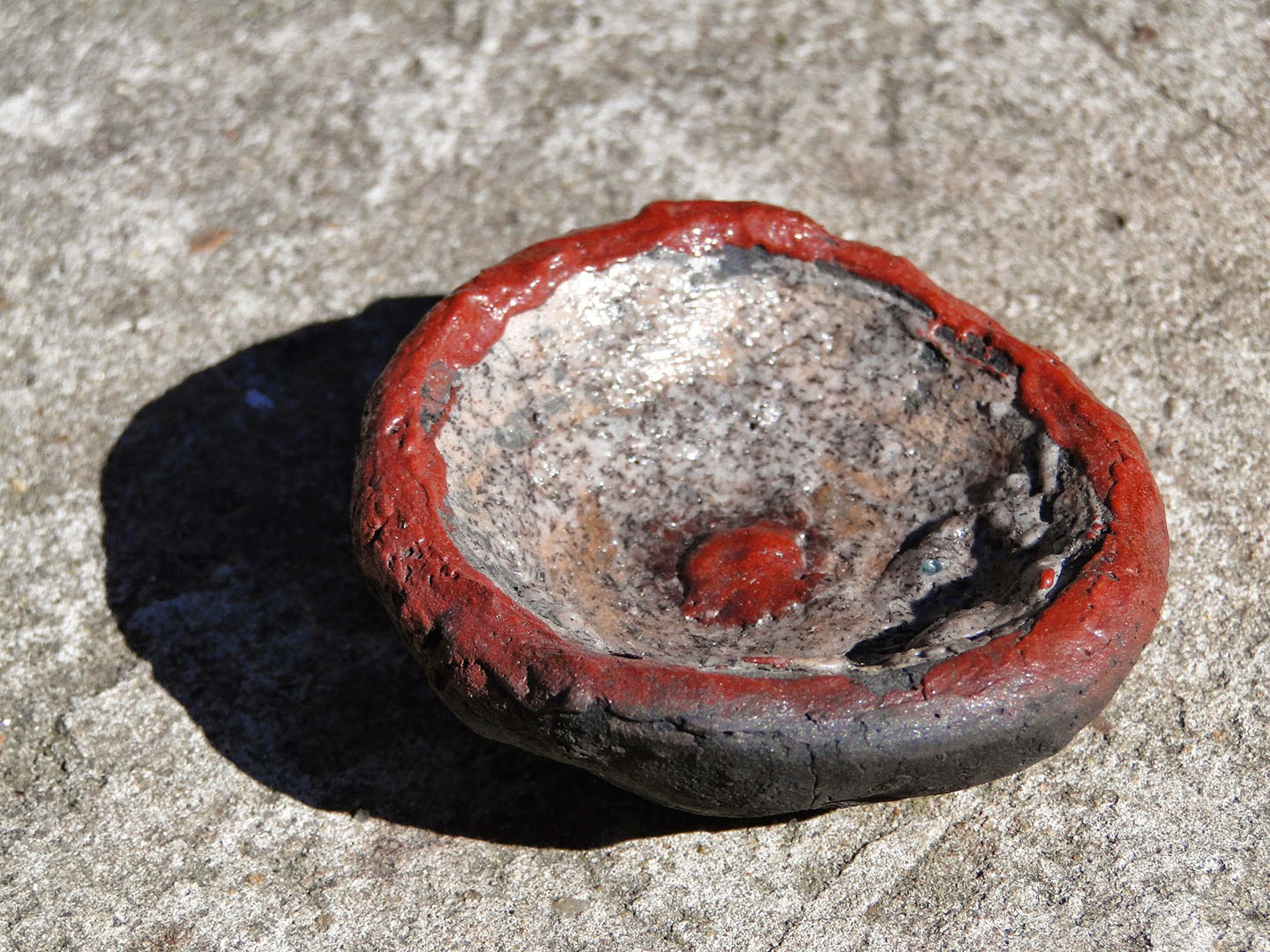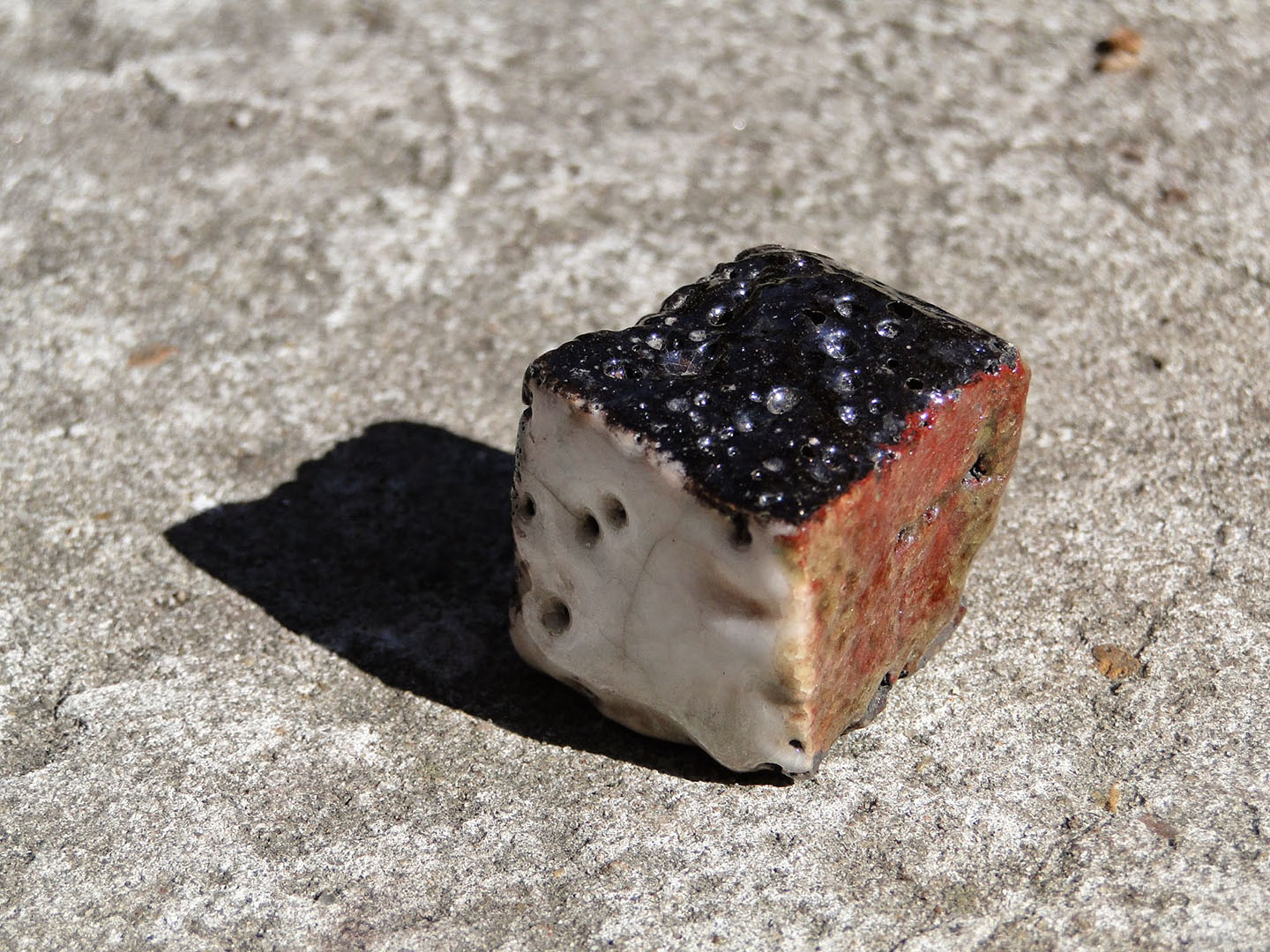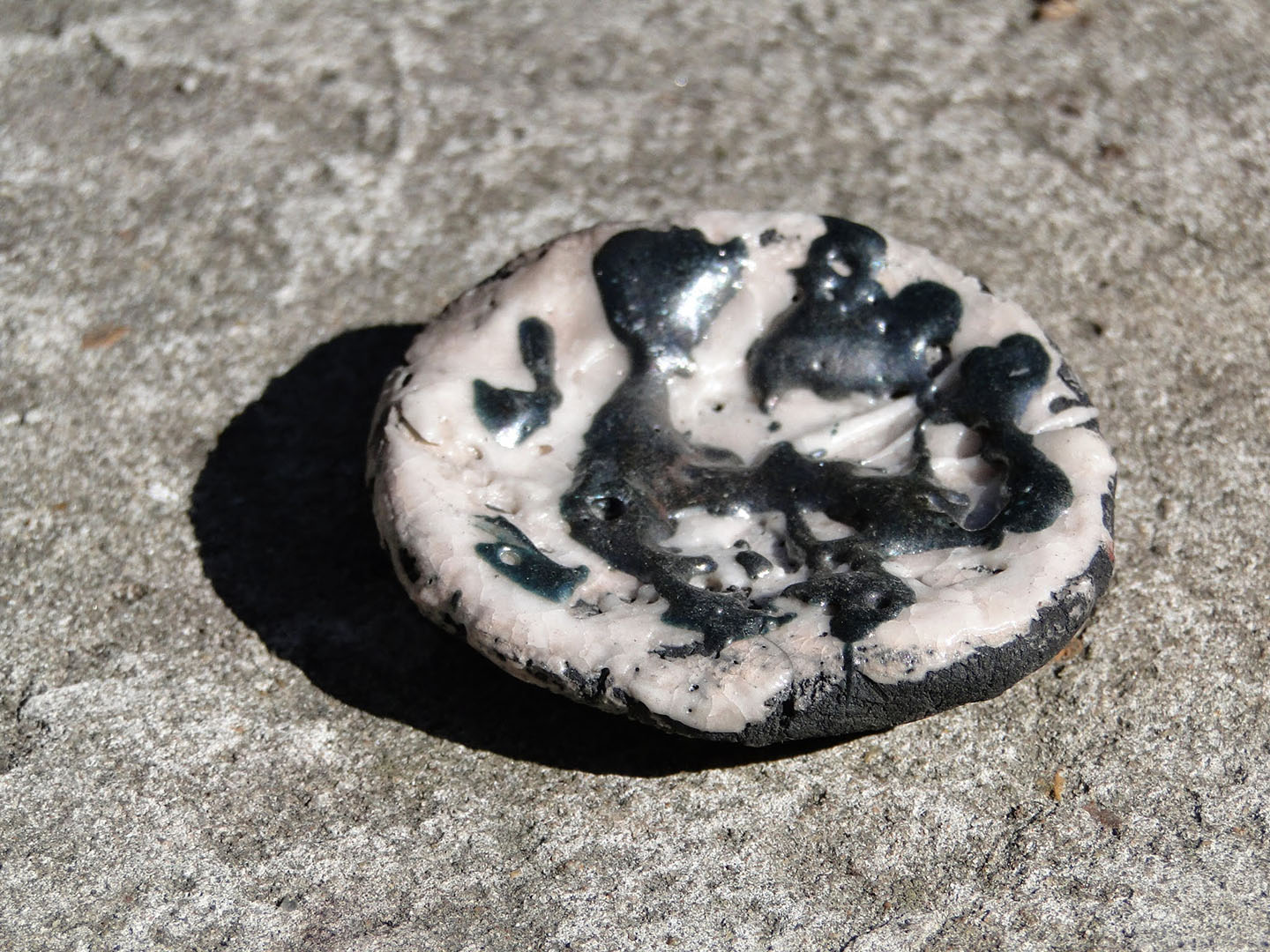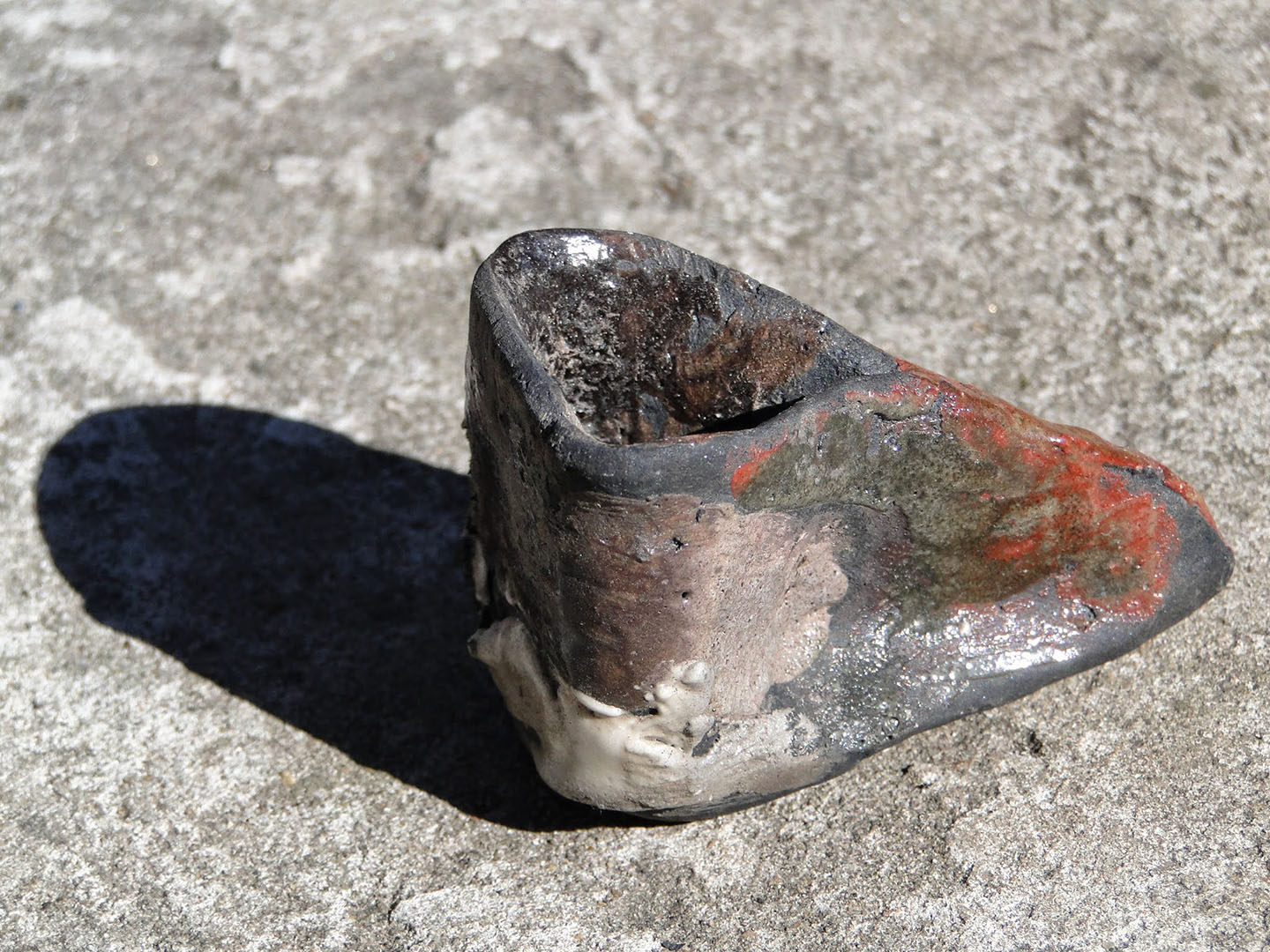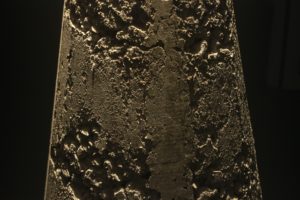Muestra 8
Analogic vs Digital
MAN by A77 ● Tarmachine II by José Huidobro
16/05/2014 - 18/07/2014
Versus
Curatorial text by Martin Huberman
Monoambiente, inaugurates in 2014 a programme based on the logic of Versus, addressing classic themes that cross the discipline through the confrontation of apparent antagonisms.
There is a latent energy in the antagonistic gazes, as if they were two magnets whose poles reject each other, but at the same time are hysterically attracted to each other. Undoubtedly there is a creative act in this discussion, where the argumentation is veiled by a concatenation of hypotheses that makes the creative thought.
Exhibition #08 inaugurates the Versus with the contrast between the analogue and the digital. On the one hand Estudio A77, directed by the architects Gustavo Dieguez and Lucas Gilardi, who orchestrate their projects on the basis of their own constructive ability as a creative foundation and then inject them with a programme charged with civility and collaboration. On the other hand, José García Huidobro, an engineer and artist specialising in the construction of productive machines. The piece presented in this exhibition has the digital programming code as its characteristic axis, although it is no more than a simple exercise in itinerancy in its machinist evolution.
Both studios project in their structures a technical knowledge, an experimental yearning, but above all a communicative will from which they seek nothing more than excuses to build artefacts to connect with the other.

